New Alloy Wheels for Vans
New Alloy Wheels for Vans. We Have a large range for you to choose from and new available all the time.
Check out the range we have below as these can set your van apart from the rest with look and style.
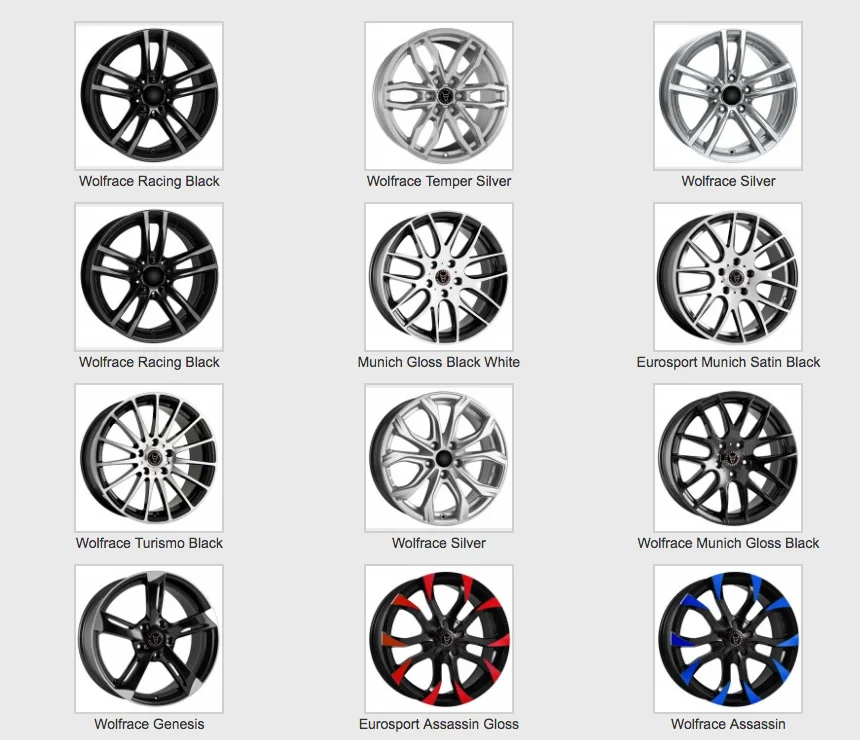
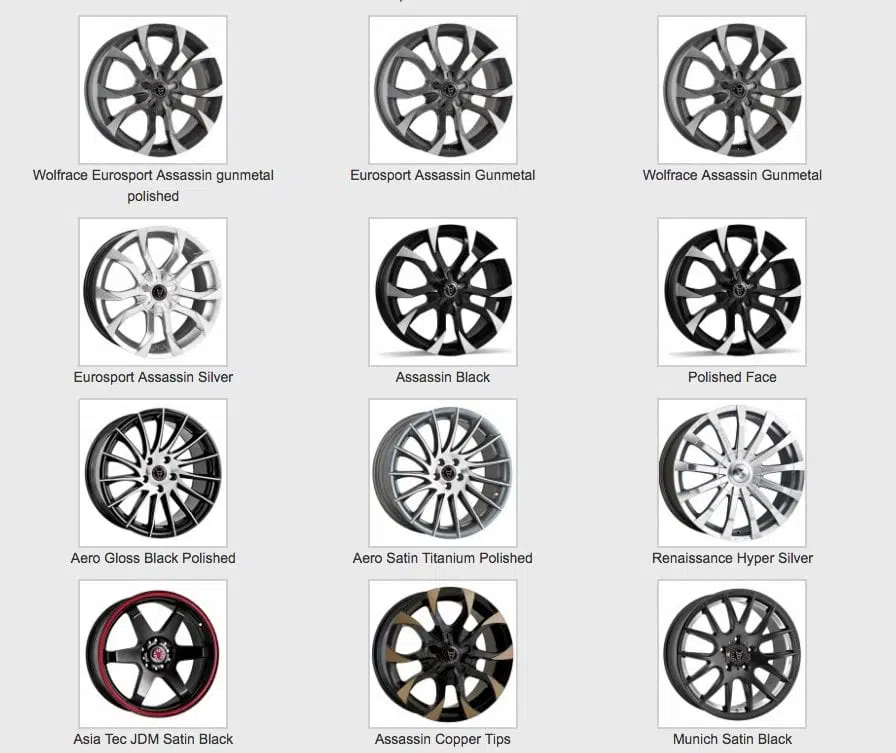
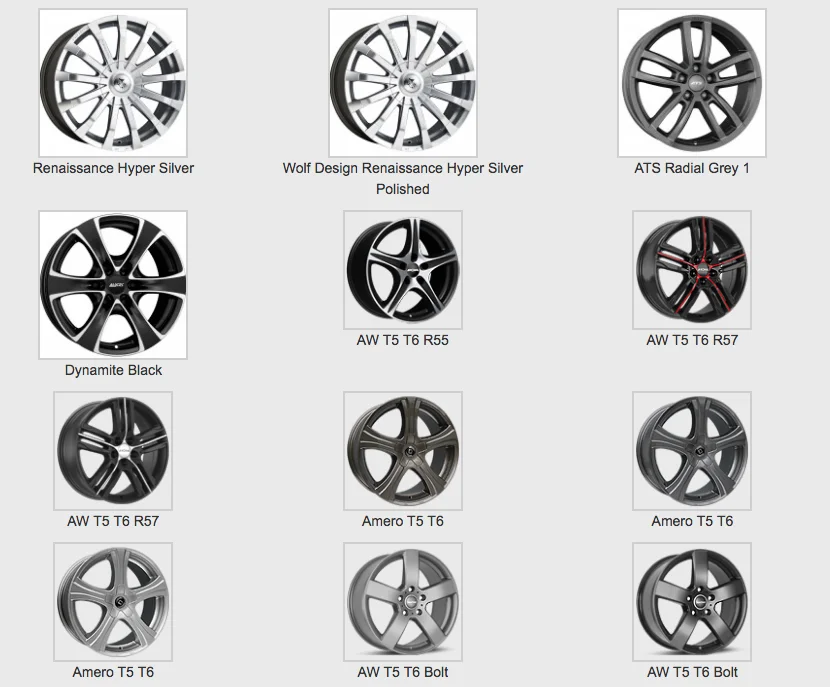
4.9 Out Of 5.0 Rating
New Alloy Wheels for Vans. We Have a large range for you to choose from and new available all the time.
Check out the range we have below as these can set your van apart from the rest with look and style.



Searching for a new van to boost your business operations or upgrade personal transportation? A used van can be worth considering. With significant cost savings, slower depreciation, cheaper insurance, and a plethora of options, a used van can offer a host of benefits while still fulfilling your transportation needs.
At Swiss Vans, we offer a wide range of used vans from top manufacturers, including Volkswagen, Ford, Land Rover, Mercedes, Iveco, Citroen, Renault, Nissan, and more. At the same time, we also want our customers to make the most of their investments by purchasing a well-maintained used van that aligns with their specific needs and preferences.
Just like there are several aspects you must look into when purchasing a new van, there are many factors you should take into consideration when selecting a used van. In this post, we’ll take a detailed look at 12 things you should look out for before buying a used van from Swiss Vans-
The external appearance of a used van is generally the first aspect that grabs our attention. So, begin your inspection by examining the vehicle’s exteriors. Watch out for signs of wear, tear, rust, and visible damage to gain valuable insights into the history and upkeep of the van.
A used van with a well-maintained exterior signals that the previous owner was conscientious and took good care of the vehicle. Here are some tips to effectively examine the van’s exteriors-
While the used van’s mileage does not solely determine its reliability, it sure is an important factor when assessing the overall condition of the vehicle. You can find several well-maintained used vans with high mileage but that doesn’t necessarily be a red flag.
What’s more important is how the van’s age aligns with the mileage. For instance, if an older van has considerably lower mileage, it could imply long periods of inactivity which could make the vehicle more prone to certain mechanical issues in the future. So, apart from the total mileage, consider the mileage consistency as well. Here are some tips that should help-
Regular servicing is the single most effective method to enhance the working life of any vehicle. A well-serviced and maintained vehicle can continue to remain functional and operate at peak performance even after many years of regular use. So, when inspecting a used van, its service history deserves your complete attention.
If the van has a comprehensive service history with maintenance records at regular intervals, it can be considered a positive sign. Look for entries of brake inspections, oil changes, and other routine services that indicate a diligent maintenance approach. Here are a few important things you should watch out for-
A commonly overlooked aspect of used van inspection is the tires. The tires are abundantly responsible for the overall safety and performance of the vehicle and thus demand a thorough examination.
It can provide insights into the van’s maintenance and potential suspension or alignment issues. Here are some tips to examine the tires of a used van-
Purchasing a used van without a thorough mechanical inspection is not a wise decision. Work with a professional mechanic to examine all the critical components of the vehicle. Only a qualified mechanic would be able to identify potential issues related to the internal components of the vehicle.
Some of the eras that deserve utmost attention are-
The interiors of the used van are just as important as this is where you and your passengers will be spending a significant amount of time. Thoroughly assess the interior features and comfort elements to ensure a pleasant and functional driving experience.
Moreover, many modern vans are now equipped with advanced features. Your examination of the interiors will also help you ascertain whether or not everything is working as expected. Follow these tips when inspecting the van’s interiors-
When inspecting the used van, pay attention to any kind of leaks or smells as they often indicate underlying conditions that could impact the performance and safety of the vehicle. Moreover, they could also lead to expensive repairs in the future.
While a qualified mechanic would be better able to assess such conditions, here are some leaks and odors you should watch out for-
The Vehicle Identification Number or VIN is a unique identifier for every vehicle. If you’re about to buy a used van, a thorough VIN check is an important part of the assessment process. There are service providers that allow you to check the vehicle’s history through its VIN.
When examining the used van’s history, watch out for these details-
Many van owners opt for modifications either to enhance the aesthetics or to make the vehicle more functional. If the van you’re interested in is equipped with such modifications, its current state deserves your attention as the upgrade could impact the performance, safety, and value of the vehicle.
Some common van upgrades owners opt for are as follows-
Last but not the least is the test drive. It offers a first-hand experience of the performance of the used van, allowing buyers to assess its responsiveness, handling, and overall dynamics. Moreover, it is an effective way to identify potential issues that are not evident in a visual inspection.
During the test drive of the used van, watch out for-
Swiss Vans takes utmost care to only offer high-quality and well-maintained used vans to our customers. We have one of the widest ranges of pickups, small vans, electric vans, minibuses, lutons, crew vans, large vans, and more, across price points to ensure every potential customer can find something that matches their requirements and budget.
Check out our Used Vans Stocklist or get in touch with us to discuss what you’re looking for. We can leverage our vast network spread across Europe to find a used van that can fulfill your requirements and expectations.
Stock is selling fast
especially 150 Highline Kombi DSG.
Over 200 New VW Vans in stock here
Low rate finance. One of the most popular models e.g
VW Transporter Kombi SWB White 150 6 speed manual no extras
£3,000 + VAT
47 X £464 + VAT
£18,047.15 + VAT
10,000 MPA
VW Transporter Panel van 110 manual
£3,000 + VAT
47 X £373 + VAT
£16,324.80 + VAT
10,000 MPA
Since its launch in 2015, the Ford Transit Custom has had numerous enhancements and modifications. The battery that these vehicles run on, however, hasn’t changed throughout the years. Wondering where is the battery on a Ford Transit Custom? Continue reading to learn everything you need to know about the Ford Transit Custom’s battery.
Like other batteries, the battery in an automobile stores chemical energy that is electrically charged. Car batteries are made of lead-acid technology and have a long lifespan; however, they are not like phone batteries in that they are often charged and depleted. Therefore, your battery won’t be in the best shape if you let it drain by leaving the lights on or if something else is causing the drain.
Group 48 batteries (H6) are used by all Ford Transit vehicles, and some even utilize two! Unlike other cars, these batteries are not located inside the engine. Rather, they are positioned beneath the driver’s seat, which shields them from the heat produced by the engine and lengthens their lifespan and efficiency.
For your van, a Transit Custom Battery may accomplish a lot. It contributes to the smooth operation of the engine and offers additional power when needed. Additionally, knowing that your van is always prepared to go in any circumstance provides you peace of mind.
You can increase the smoothness and efficiency of your engine by using a Transit Custom Battery. Emissions can be decreased and fuel efficiency increased as a result.
A Transit Custom Battery can provide you with the boost you require if you frequently find yourself in circumstances when you need a little extra power. When hauling a trailer or climbing hills, this can be helpful.
In the event of an emergency, knowing that your Transit Custom is always prepared to go will ease your mind. You’ll be happy you have a Transit Custom Battery on board in case you ever get stranded.
Transit Customs with and without a Transit Custom Battery often keep their worth better. If you ever want to sell your van, this can be a big selling feature.
A lot of Transit Custom battery producers provide longer guarantees for their goods. This might provide you with additional security if issues arise later.
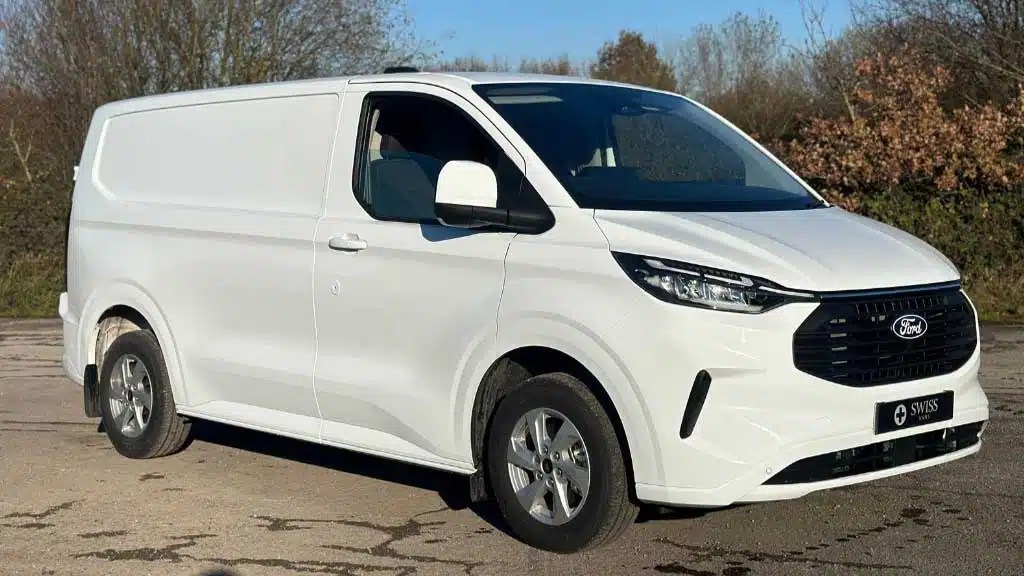
The Ford Transit battery is situated beneath the driver’s seat. If your battery dies, you can jump it using the battery connectors located in the engine compartment on the driver’s side. To remove the battery, you need to first move the driver’s seat back. Next, remove the rail stop bolts and plastic screw covers.
The bolts require a T40 TorxBit, and the seat may now be shifted to the front. To remove the battery cover, use an A5/16″ socket wrench. Now you may undo the nuts on the battery terminals. Simply pull out the battery and hoist it out using the handles.
If you are not sure you can do this yourself, please leave the task to a professional. They are trained to handle such tasks and will make sure the job is done flawlessly.
You’ll need a 12V lead acid car battery for your FORD TRANSIT CUSTOM. Century, Panasonic, and Varta manufacture batteries for your Ford Transit Custom, and we also offer more brands. Some contemporary automobiles may include Idle Start-Stop. Dry Absorbed Glass Mat (AGM) batteries are commonly used in European cars with Idle-Start-Stop. Most Asian vehicles equipped with stop-start technology use a wet-enhanced flooded battery (EFB).
Now that you know where is the battery on a Ford Transit Custom located, you can also check if there is any issue with your battery. Your battery may not be functioning properly if your Transit Custom is experiencing problems starting. Here are some indicators that the battery in your Transit Custom needs to be changed:

If it turns out that the battery in your Transit Custom needs to be changed, make sure to pick an original Ford part. Always choose a trusted source of genuine batteries for your vehicle.
A dirty battery will drain more quickly. Make sure to keep the battery’s top clean and clear of any dirt or debris to avoid this from happening.
Lead-acid batteries require routine checks of their water levels. Add distilled water until it reaches the fill line if it’s low.
A short circuit has the potential to harm a battery. Make sure there are no loose wires and that the cables are connected correctly to avoid this from happening.
A lead-acid battery requires frequent charging. You can accomplish this by either running the car for a while or connecting the battery to a charger.
A lead-acid battery needs to be kept in a dry, cool place when not in use. Its life will be extended in this way.
If you discover that your Transit Custom battery is not performing properly, there are a few steps you can take to diagnose the problem. First, inspect the battery terminals to ensure they are clean and corrosion-free. If the terminals have corroded, clean them with a wire brush or battery terminal cleaner. If the battery terminals are clean, inspect the battery cables to ensure they are not lost or damaged. Tighten or replace cables as needed. Finally, inspect the battery to determine if it is broken or leaking. If the battery is destroyed, you will have to replace it.
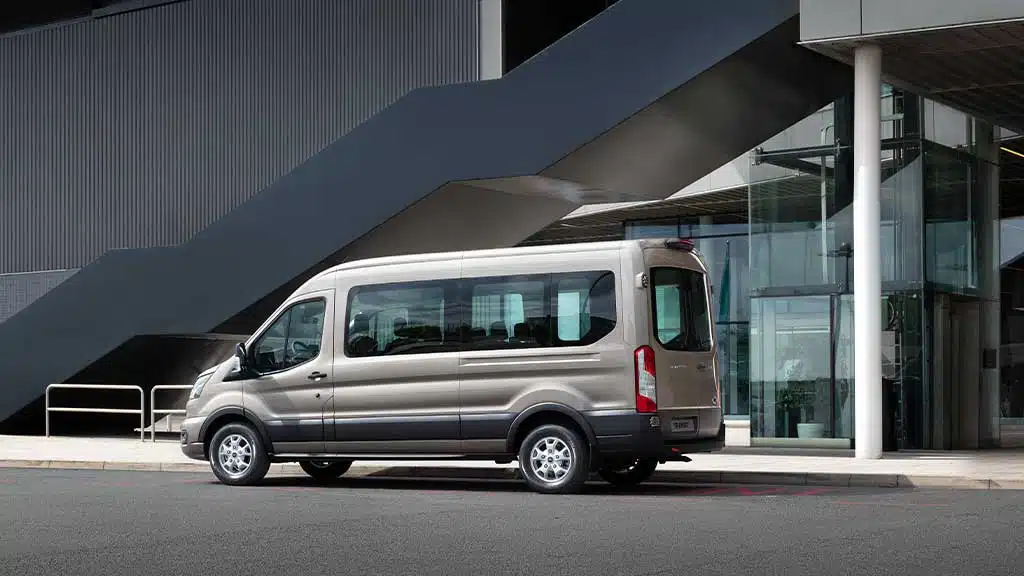
If your Transit Custom battery still does not work after following the steps outlined above, there could be some issues with the charging setup. You can check if this is the case by using a voltmeter if you have one. You need to first remove the negative battery cable. Then using a voltmeter, you can connect to the positive terminals of both the battery and the charging system. You need to then start the engine and let it remain idle for a few minutes. At this point, the voltmeter should read 13.5-14.5 volts. If it does not, there is a problem with the charging system, which will have to be repaired or replaced.
As vans age, the components are usually missing because the owners can’t be bothered to repair some of the original parts. This is common for many difficult-to-fit parts. Another key step is to determine whether the old battery is the correct one. People will sometimes choose the lowest choice, even if it means purchasing the incorrect batteries. Although the improper battery may start the vehicle, it may have an impact on the battery’s longevity. This is especially critical if you’re using the Ford Transit model as the foundation of a motorhome or a camper.
Based on your car model and make, a car’s battery can be installed in a variety of locations. Typically, the Ford Transit battery replacement, 250 battery is found beneath the driver’s seat. To access it, pull the seat forward, and remove several bolts from behind it. To access the battery, simply slide the cover out of that position.
The primary function of a car battery is to supply the surge of energy required to power the engine. When you turn the key in the ignition, it powers the starting motor, which turns the engine until it starts. Battery-powered lights and electrical systems: Car batteries power the vehicle’s electrical systems, which include lights, indicators, dashboard instrumentation, entertainment systems, and more. Hence, make sure that your vehicle’s batteries are in optimum condition and replace them if they aren’t working at their full potential.
The Ford Transit Custom has always been one of the best-selling cars in the world. However, following the pandemic, its sales have skyrocketed. Since its launch, the mid-sized Transit has been a huge success, propelling the Custom to superstar status. The newest model has undergone substantial changes, not the least of which is the Ford Transit Custom’s electrification. Want to know which transit custom engine is best? Read further to know more.
The answer to this question will range from a few hundred to several million. If each unique item is counted as a distinct variant, there are about two million combinations; however, a more basic body, engine, gearbox, and trim type computation yields approximately 550.
The latest vehicle make is powered by a 2-litre EcoBlue engine. It promises fuel savings of up to 6 percent over the previous model. The latest engine offers outputs of 170PS, 150PS, 136PS and 110PS.
A six-speed manual transmission is standard, although a new 8-speed automatic from Ford is available on all versions. Ford has revealed that it would install a new 183bhp diesel engine in its Transit Custom Sport van, making it the most powerful Transit ever.
The 183bhp variant of Ford’s 2.0-litre EcoBlue diesel engine, badged 185, leads the current Transit Sport series lineup. The engine boasts a nine percent boost in power output and offers a massive 415Nm of torque, with the powerful Sport model distinguished by the now-iconic twin sports stripes.
Ford equips the Transit Custom with a more aggressive body kit, brash sports stripes, a choice of 17- or 18-inch alloy wheels, and an interior with partial leather. Customers have the option of purchasing both long- and short-wheelbase models, as well as more traditional van versions with rear windows and more seating. The variant also includes a Wi-Fi hotspot that can accommodate ten devices and a touchscreen with Ford Pass Connect communication features.
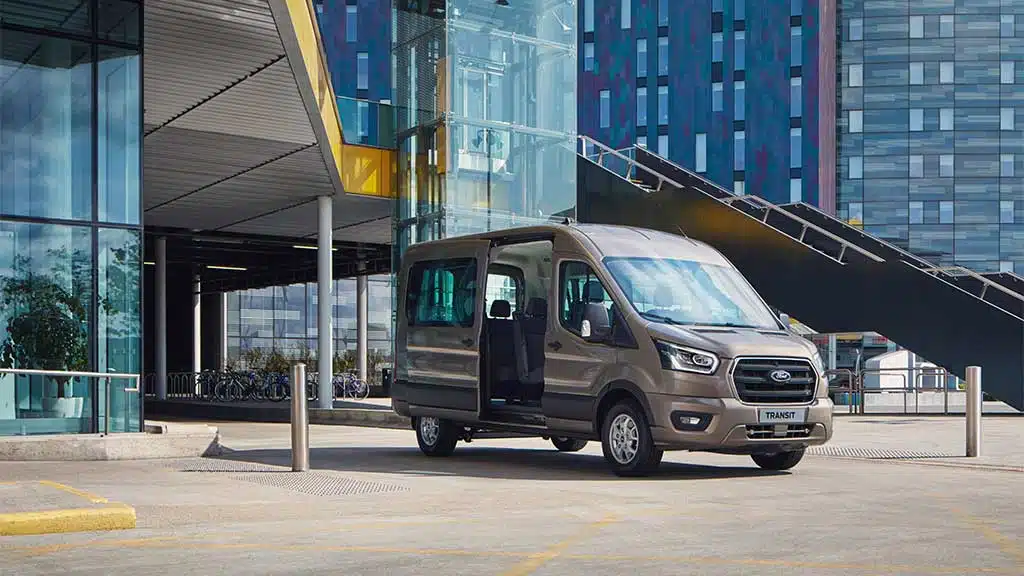
If you are eager to learn which transit custom engine is best, then here is the answer. To comply with Euro 6 pollution regulations, the original 2.2-liter turbodiesel engines from the Euro 5 specification were swapped out with new 2.0-liter EcoBlue engines in 2017.
Along with several other technological advancements, the 2.0-liter engines were introduced, and for the first time, a six-speed automatic transmission was offered as an option.
The 2.0-liter EcoBlue engines saw additional updates in 2019 that included new injectors, pistons, turbochargers, and an on-demand oil pump. According to the changes, real-world fuel efficiency will increase by 7%. Simultaneously, the top-of-the-range engine was upgraded to 185 horsepower. More information about all of this can be found in this section on driving.
Three different 2.2-liter TDCi turbodiesel engines were available at launch for this generation of Ford Transit, providing the following power outputs:
All the variants were evaluated with a 500 kg payload while they were in front and rear wheel drive configurations at launch in 2014. On steep inclines, the 125-horsepower version started struggling but the 155-horsepower version felt incredibly powerful.
To comply with Euro 6 emissions requirements, Ford introduced a new range of 2.0-liter EcoBlue turbodiesel engines in the summer of 2016 to the Transit lineup. However, these engines didn’t start to be offered in large quantities to UK dealers until 2017.
The following are the Transit 2.0-liter engines’ power outputs:
As part of the 2019 redesign, a new model with 185 horsepower and 415 Nm was added to the lineup. With 20% more low-end torque early in the rpm range, all of the Euro 6 engines are incredibly strong for their smaller size—an advantage you can feel on the road.

Even the least powerful version, with 105 horsepower, operates well under a variety of testing settings. It was tested with a 600 kg test weight in the back, for example. Every output has been put to the test under diverse conditions. These engines are also quieter than the engines they replace, which enhances the enjoyment of every drive.
Except for a new 185 horsepower power output at the top of the range, not much appears to have changed for the post-facelift engine lineup on the surface; the other three engine options continue to deliver the same horsepower and torque ratings.
In actuality, though, every one of the new engines gets a higher-pressure fuel injection system, an on-demand oil pump, a redesigned turbocharger, and new piston designs. They are therefore claimed to be more receptive and productive. When driven alone, there isn’t much of a change; however, we did notice that the new engines are noisier than the old ones, with the rear-wheel drive versions being especially noisy inside.
It is not clear if this is due to the engine enhancements or modifications made to some of the materials as part of the facelift’s weight-saving initiative to increase its payload. However, the van is undoubtedly not any quieter now that it has the higher-pressure injectors a new aluminum bonnet, and composite bulkheads. Refinement is therefore one area where the most recent German competitors, the VW Crafter and MAN TGE in particular, clearly outperform the Transit.
To be honest, though, the 2019 Renault Master and Vauxhall Movano updates will also offer the Ford serious competition in this regard. Nevertheless, after a performance test with a half-payload, the Transit’s engines still felt more than capable of moving a lot of cargo with ease.
The Transit EcoBlue Hybrid is referred to as mHEV [Mild Hybrid Electric Vehicle]. It is packed with a 2.0-liter diesel engine that produces 130 horsepower. The mHEV package, which can be installed on any EcoBlue engine, uses new 48-volt electric technology, but in the UK, it will only initially be available with 130 horsepower to gauge demand.
This is not a Transit that can run on electricity for an extended time; for that, you will either need to downsize to the Transit Custom PHEV or wait for the all-electric Transit, which is scheduled to arrive in 2021. Don’t let the word “hybrid” mislead you. To conserve gasoline, the mHEV instead makes use of a starter generator and a tiny lithium-ion battery pack hidden under the passenger seat.
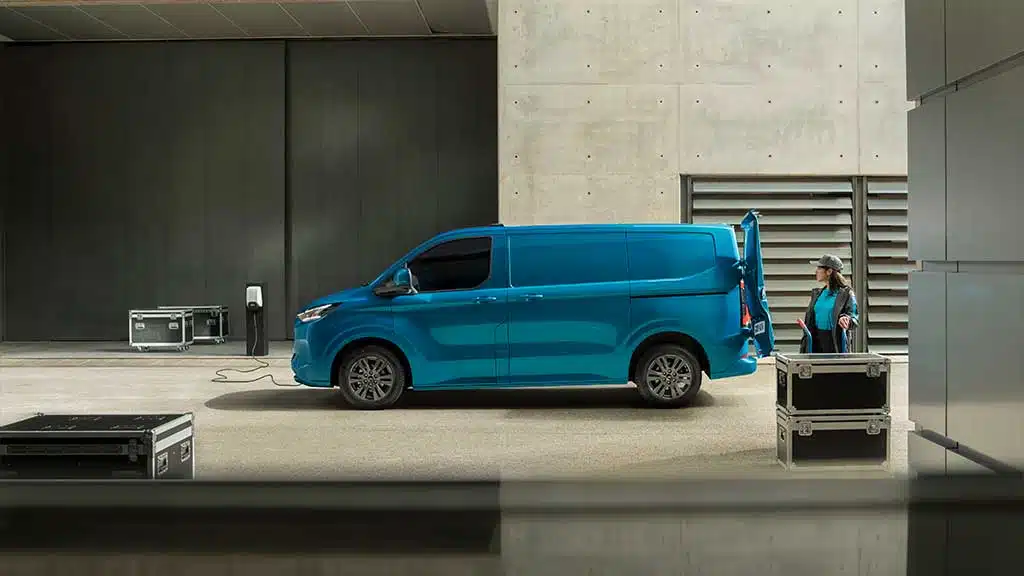
It accomplishes this by employing the extra battery pack to lessen the stress on the engine and by functioning as an enhanced stop-start system, stopping the engine sooner and resuming it faster. Reusing the energy collected during braking to recharge the battery, power electrical components, and even improve engine response at low speeds. According to theory, it will increase fuel efficiency by 3% while driving normally and by up to 8% when traveling through town in stop-start traffic. However, Ford estimates that it will take 80,000 miles before the fuel savings (£700 at launch in 2019) cover the initial outlay, so the numbers aren’t particularly impressive. Additionally, the weight of the mHEV package deducts that amount from your possible maximum payload, further complicating matters.
Not much differences were noted between driving Transits with and without the tech present, except for the way the engine cuts off at low speeds as soon as you depress the clutch.
The fact that the daily driving of the EcoBlue Hybrid is identical to that of any other Transit is fantastic news. However, paying for it now won’t immediately make you feel good because there’s not even an indicator to indicate when more energy is being recovered or the extra battery is being utilized.
The Ford E-Transit establishes the benchmark to which other large electric vehicles should strive. It is not only less expensive than competitors, but it is also better made, has a longer range, is more powerful, and has an excellent payload. In short, it is the best alternative available at the moment.

It has a claimed maximum range of 196 miles, and Ford believes that even in the worst-case scenario, you should be able to go 100 miles when carrying things and not being too soft with the throttle. The driving experience is typical of an electric van, which is more than can be said for many competitors, as it is quiet and smooth on the road. There is little wind or road noise, and it is a calm experience.Regardless of which power option you choose, you’ll have access to all 430Nm of torque right away, allowing for quick acceleration from a stop.
The 2L EcoBlue TDCi engine is a recent addition to the Ford Transit portfolio. It has quickly gained a reputation for its efficiency and dependability. It has a low emission rating and is intended to be low-maintenance. Ford created the 2.0L EcoBlue TDCi diesel engine specifically for their Transit vehicles. It is recognized for its dependability, efficiency, and performance. Although there are multiple engine variants available in Ford models, the recent engine upgrades are remarkable.
Understanding the differentiation between business and commuting miles is crucial for self-employed individuals or those who must adhere to specific guidelines outlined by the IRS. In this article, we will explore the intricacies of business miles vs commuting miles, shedding light on their distinctions and how these differences can impact financial and tax decisions.
Before delving into the complexities, it’s important to establish what constitutes business and commuting miles.
Business Miles: These are the mileage accumulated while actively engaged in activities contributing to your business operations. For example, if you’re a sales representative traveling to meet potential clients, any distance covered during that journey falls under the category of business miles. Likewise, if you’re a freelance designer driving to a client’s office to discuss a project, any mileage logged for that trip is considered business-related. The pivotal element to consider revolves around the fact that travel is essential to your professional duties.
Commuting Miles: When calculating mileage, it’s important to note that commuting miles refer to the distance you cover during your daily journey from home to your primary workplace. These are the everyday travels required to reach your office, store, or any location where you regularly perform your job. Commuting miles are classified as “getting to work” miles. They cannot be claimed as tax-deductible by the IRS since commuting is a personal choice rather than a direct responsibility related to your work.
Understanding this distinction between business miles vs commuting miles holds utmost significance as it is a foundation for determining which type of mileage can provide tax advantages and which are considered personal expenses. How these miles are categorized can impact your tax deductions and financial choices. As we explore the topic of commuting miles vs business miles on a more profound level, it’s important to remember that this fundamental distinction serves as the foundation for several guidelines established by the IRS and can have significant implications for various aspects of your career.

Determining the distinction between business miles vs commuting miles IRS can become hazy for self-employed individuals. Due to their ability to work from home or have unpredictable schedules, identifying whether a trip falls under a business or commuting mile requires careful consideration and effort. This is where having a clear comprehension of the guidelines provided by the IRS becomes crucial.
Flexibility and Complexity: The self-employed often enjoy a level of flexibility that traditional employees do not possess, which introduces an element of complexity when discerning business miles and commuting miles. Many individuals who work for themselves conduct a significant portion of their tasks remotely, either in their home office or while traveling to meet various clients. This freedom poses challenges when it comes to drawing clear boundaries between types of travel.
For example, suppose you are a freelance writer primarily operating out of your home office but occasionally meeting with clients for brainstorming sessions. In such cases, categorizing your mileage can be quite intricate. Is traveling to the client’s meeting location considered a business mile? Or does it fall into the commuting category, as your home is your primary workplace?
Accurate record-keeping is crucial for self-employed individuals, particularly when categorizing miles. It’s essential to have meticulous documentation in place. Keeping thorough records of each trip’s purpose, destination, and how it relates to your business activities can make a difference. Utilizing mileage-tracking apps or software is highly recommended if you’re working for yourself, as they can simplify this process.
These tools often provide the option to classify each journey as business-related or personal and offer an organized method of storing travel-related information. Not only does such documentation help with tax deductions, but it also serves as considerable evidence if you were ever subjected to an IRS audit.
Differentiating between business miles vs commuting miles self-employed requires careful consideration of your work structure and travel patterns. Although self-employment comes with flexibility and advantages, it necessitates more diligence in accurately tracking and categorizing your travel. The initial step is to acknowledge the complexities that may blur the boundaries between these miles. The subsequent step involves using available resources and tools to ensure compliance with IRS guidelines and maximize potential tax benefits.

The IRS has established specific criteria to distinguish between business miles vs commuting miles IRS. According to its definition, business miles encompass any travels undertaken within the scope of work activities such as meeting clients, attending business-related gatherings or appointments, or engaging in job-related errands. Alternatively, commuting miles refers to the journey from your dwelling to your main occupation.
It’s crucial to bear in mind that commuting miles are generally non-tax-deductible. Nonetheless, there are circumstances wherein commuting miles can morph into deductible expenses. For instance, the travel could be considered business miles if you possess a home office and commute to a client’s site rather than your primary workplace. It is always wise to seek advice from IRS guidelines or a tax expert for precise classification purposes.
A home office can change the nature of your commuting miles, potentially making them eligible for tax deductions. For self-employed individuals who use part of their home exclusively and regularly for business purposes, any travel they undertake from their home to meet clients or suppliers or engage in activities related to their business may be considered deductible. This is because, under these circumstances, the individual’s residence is deemed their primary place of business. Any travel from there to other locations associated with work becomes an extension of their professional responsibilities.
To avoid confusion regarding what classifies as business or commuting miles and ensure eligibility for tax deductions, it is essential to refer to the guidelines provided by the Internal Revenue Service (IRS). Due to the intricate nature of tax regulations involved, specifically with self-employment, individuals seeking professional advice are highly recommended. Consulting an expert will help ensure accurate interpretation and application of these guidelines based on individual circumstances.
It is vital to comprehend the tax ramifications of business miles compared to commuting, as it can influence your financial outcome. Business miles are typically eligible for tax deductions, allowing you to deduct a set amount for each mile traveled on business-related endeavors. Utilizing this deduction can lower your taxable income and alleviate your tax burden.

On the contrary, commuting miles are not eligible for tax deductions. This is because commuting is viewed as a personal expense since it pertains to the distance covered to reach your regular workplace. Nevertheless, if you are self-employed and conduct business activities or meet clients from your home office – which qualifies as your primary place of business – there may be potential deductibility associated with traveling from home.
Proper record-keeping practices are of utmost importance in distinguishing between business miles vs commuting miles. The Internal Revenue Service (IRS) mandates the need for accurate documentation to substantiate your mileage claims. To track business miles, it is essential to maintain a log specifying the date, the reason for the trip, starting and ending points, and the total distance covered. This comprehensive record will serve as substantial proof if an audit occurs.
Typically, commuting miles are not considered deductible by the IRS. Nevertheless, certain circumstances can alter this position – if your commute forms part of a business trip or you have a qualifying home office setup – transforming the nature of your travel altogether. In these cases, meticulously keeping detailed records outlining the business purpose behind each commuter journey becomes crucial.
In the modern era of technology, multiple tools and applications are available that can simplify the process of monitoring business and commuting mileage. These applications use GPS technology to accurately calculate the distance covered during your journeys, thereby facilitating the maintenance of precise records for tax purposes. Moreover, they can differentiate between personal trips and those conducted for professional reasons.
Mileage tracking apps offer a degree of efficiency and accuracy that conventional manual techniques must match. By utilizing these apps, you can input the purpose of each trip, allowing the embedded GPS technology to handle everything else. The application meticulously keeps track of various elements, including distance traveled, route taken, date, and time. This comprehensive collection serves as an essential dataset for calculating tax deductions, concurrently acting as a valuable resource to assess travel patterns effectively while enabling informed decision-making regarding optimizing routes and minimizing travel duration.
![]()
In addition, these applications frequently offer features that enable you to classify each journey as either professional or personal. This feature allows for a clear distinction between the two types of mileage. Some applications go even further by allowing the export or printing of comprehensive reports. These reports can be incredibly handy during tax season or when dealing with an audit. By utilizing the capabilities of technology, you can streamline your mileage-tracking process and minimize the risk of inaccuracies. Additionally, this approach guarantees that well-organized records are easily accessible whenever necessary.
When it comes to deciphering the complexities of business miles versus commuting miles, navigating this territory can be quite intricate. This is especially true when considering the various scenarios that may apply to your circumstances. However, fear is not! If you need assistance with categorizing your travel or want to optimize your tax deductions, enlist the guidance of a tax professional specializing in self-employment and small business taxes. By doing so, you will access tailored advice specifically geared toward your unique situation.
Tax professionals specializing in self-employment and small business taxes are undoubtedly well-acquainted with the intricacies of tax regulations regarding different forms of work-related travel. They possess a treasury of knowledge that enables them to provide priceless insights into accurately classifying your mileage expenses, discerning, and understanding IRS guidelines with precision, and identifying any potential deductions that might escape your attention while navigating through this complex terrain. These professionals boast an in-depth familiarity with tax laws and diligently monitor any modifications or amendments made thereof, which could significantly impact how you approach filing taxes on these matters.
When you seek professional advice, you invest in peace of mind. Tax laws’ complexity means that incorrectly interpreting them can result in costly consequences. By working with a tax professional, you equip yourself with the necessary knowledge and guidance to navigate the intricacies of commuting miles vs business miles. This enables you to focus more on expanding your self-employed venture and less on potential tax-related pitfalls.
Being well-versed in the distinction between commuting miles vs business miles is vital for self-employed individuals looking to optimize their tax deductions. The guidelines put forth by the IRS play a crucial role in determining how these miles should be categorized and whether they are eligible for tax deductions. Keeping precise records, utilizing technology for tracking purposes, and seeking professional advice are all essential steps toward maximizing travel-related deductions. Regarding taxes and money matters, every single mile holds significance
The Mercedes Vito is a perfect rental van for those looking to travel as a group. Whether you plan to travel with your family, work colleagues, or business associates, the Mercedes Vito is among the best-performing rental vans. The Mercedes Vito dimensions ensure adequate internal space for passengers and cargo. Read on to understand these dimensions and decide if this mid-sized van can fit your group’s needs.
The latest Mercedes Benz Vito has one roof height, two wheelbases, and three body lengths. Therefore, you have three rental options: L1, L2, and L3. When checking their dimensions, consider the following:
The L1, L2, and L3 vans have different exterior dimensions. Let us analyze them below:
Again, the L1, L2, and L3 rental vans have varying load area dimensions inside the cabin. The load area refers to the overall room for your cargo. When considering the Mercedes Vito SWB dimensions, the L1 model fits best. A short wheelbase (SWB) van has a short wheelbase and overall length.
It is 4,895mm long and has a wheelbase of 3,200mm. No wonder it is called Vito Short. Due to these dimensions, the L1’s load area is the smallest. See its maximum load area dimensions below.
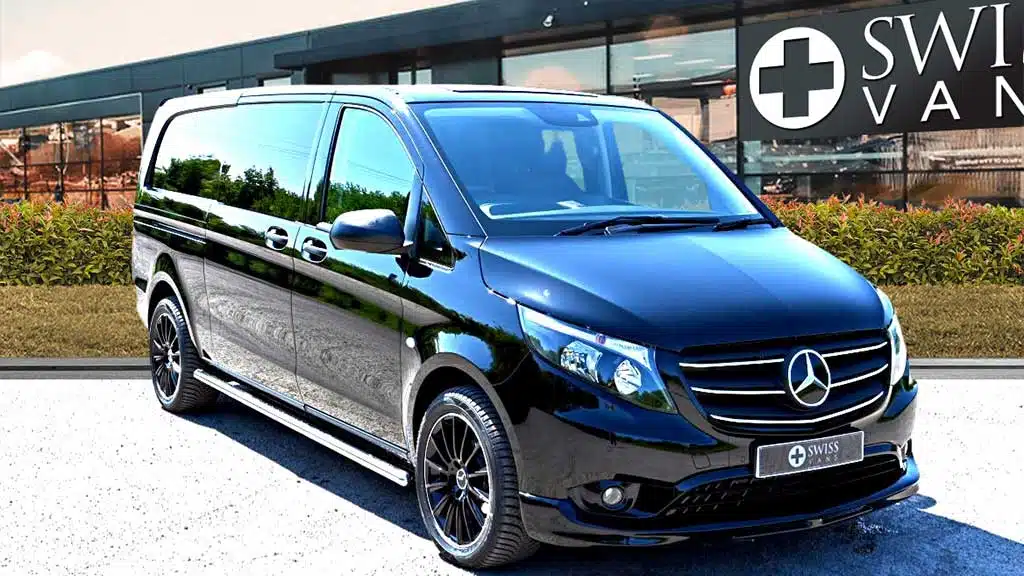
The L2 is a large, spacious van. When looking for Mercedes Vito LWB dimensions, you should evaluate the L2. Also known as Vito Long, the L2 van has a wheelbase of 3,200mm, like the L1. However, its overall body length is larger: 5,140mm. To know if its load area can handle your group members’ cargo, check its maximum load area dimensions below:
If you are traveling with a large group of people, the L3 Vito could be the best choice. Also called the Vito Extra Long, the L3 van has a body length of 5,370mm. Unlike the L1 and L2 vans featuring a wheelbase of 3,200mm, the L3’s is 3,430mm. Hence, it has the largest maximum load area dimensions.
Even if the load areas between these panel vans differ, they have the same structure. They have a steel bulkhead, a sliding side door on both sides, and a typical rear barn door. Each van has fitted load lashing rings. However, you can get optional floor lashing rails and more for the side of the load area.
All vans have wooden or composite flooring material and hardboard load lining for the sides. They also feature an LED lighting strip to ensure you can still access the cargo area during the dark.
As earlier hinted, all three vans feature a sliding door on both sides and one rear door. The Mercedes Vito dimensions for doors are equal on all vans. The side load door has a height of 1,252mm and a width of 985mm. Its rear door is 1,261mm high and 1,391mm wide.
The rear door is also the tailgate, which is uncommon with other cargo vans. The vans have a loading height of 588mm. This is the distance from your feet to the loading floor.
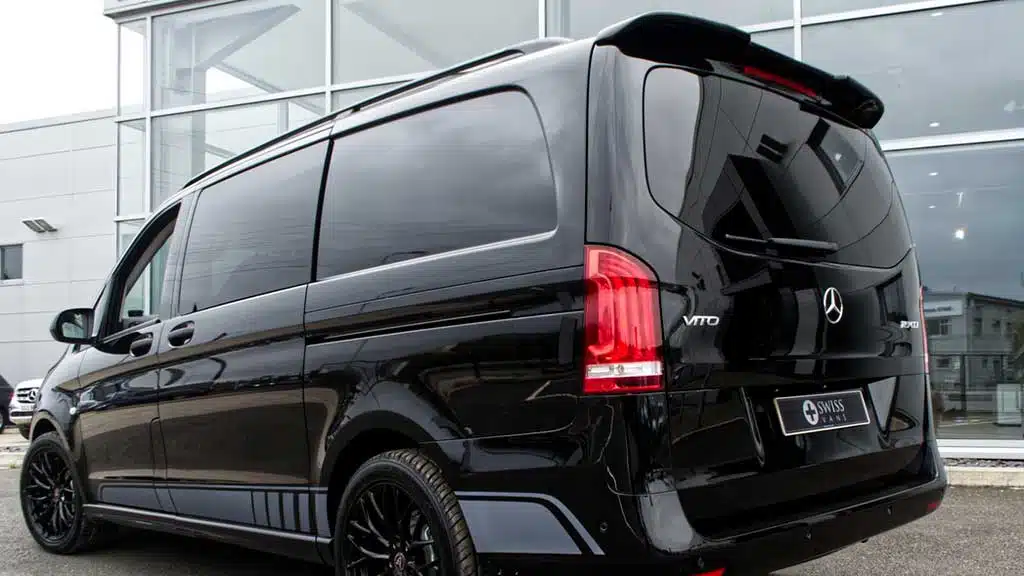
It is essential to count a van’s maximum load capacity. This way, you can pack just enough cargo for everybody’s safety and comfort. The Mercedes Vito dimensions in this regard vary, as shown below:
The best Mercedes Vito trim level is the L1 if you want the highest payload. The maximum towing capacity across all models is 2,500kg if you have a braked trailer. If you do not, the total towing capacity is 2,000kg.
Focusing on the Mercedes Vito dimensions when hiring a van for any activity is vital. First, it can help you select a van for ferrying everyone with their cargo. Based on the data we have shared above; you can choose a van that best suits your group’s needs like this:
As you have noted, the height dimension is constant on all three vans. When you have not loaded any of these vans, the maximum exterior height is 1,910mm. The vans’ maximum interior height is 1,391mm. After placing the cargo in the load area, the maximum internal and external heights should drop slightly.

Hence, do not consider height as a key factor when choosing between these vans. Instead, focus on overall body length, width, and volume. The larger your group is, the bigger the van should be.
One must think about the Mercedes Vito dimensions when finding a rental van. It is the only way to know the option that can suit your group’s needs. Besides these, other things can motivate you to hire one of the three Mercedes Vitos, including:
One vital consideration when hiring a van is the Mercedes Vito dimensions. All Vito models have similar internal and external height dimensions. If you plan to transport a large group of people and cargo, your top choices are the L2 and L3 vans. On the other hand, the most reliable SWB van is the L1. It can handle your small group’s travel needs.
Looking for a brand new van? Have you considered leasing? If not, it’s probably because you don’t know how it works and all the benefits it brings. Our step-by- step guide will explain exactly how leasing works, from finance options right through to delivery of your dream van.
Why Choose Swiss Vans for Your New
Leasing a van, as compared to buying one, is an appealing option for many reasons. For one, leasing a van means that you don’t have to go through the usual hassle and trouble of all the purchasing paperwork. Plus, you don’t have to commit to a costly choice. You can drive the van around for the lease period, get your work done, and then make up your mind later on about whether you want to buy it or not.
Just as there are popular dealerships and companies in business for car selling and buying, there are also companies that cater specifically to customers looking for a lease. Swiss Vans, in particular, is a Europe-based company that offers van leasing services. It’s quite a popular name and it has served thousands of customers throughout the years of its existence.
If you are looking to lease a van for yourself but are not sure whether to go with Swiss Vans or not, don’t worry. Let’s take a look at what this company has to offer and why you should choose it for your van leasing needs whenever they arise.
We did just describe what Swiss Vans is in the heading above, but we have to elaborate a little on that to make things clear.
Swiss Vans is not only just a van leasing service. Rather, it is a company where you can lease or buy vans from a variety of different brands and manufacturers. It also offers modifications and upgrades i.e., that you can apply to the vans you’re renting or buying.
According to the company’s official website, it has more than 20 years of experience in the industry, and it supplies throughout the United Kingdom.
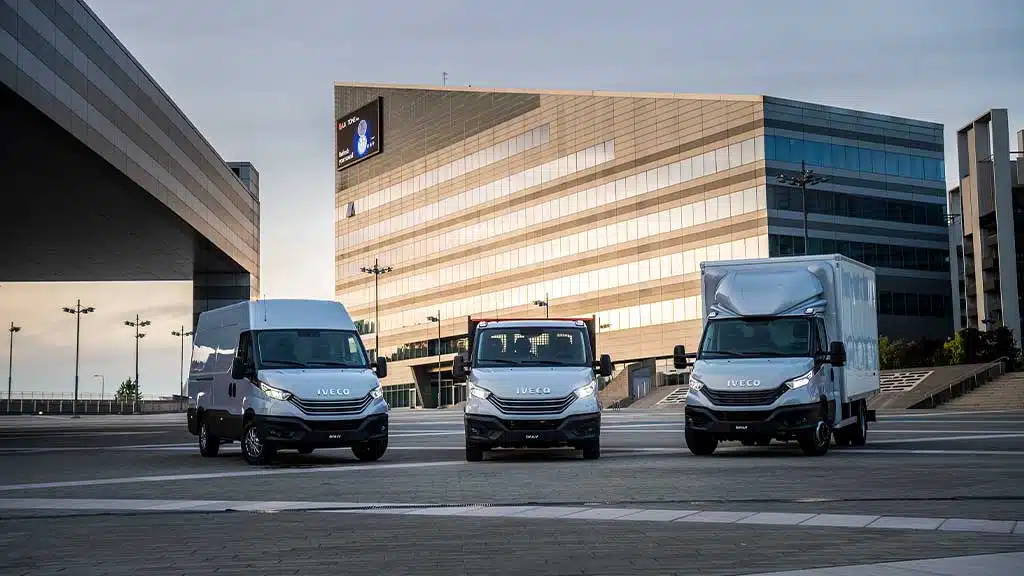
Now let’s take a look at some of the reasons why you should choose this company the next time you want to lease a van.
One of the main things about this company that makes it ideal for every van leasing need is that it stocks vans of virtually every kind and from a wide range of manufacturers.
If you head over to the official website and check the “Makes” menu, here is how the assortment of vans is spanned out:
The vans are listed type-wise at the very left. You can pick and choose from types such as:
And so on.
Looking at the large variety of vans that you can get at Swiss Vans, there is pretty much one available for any purpose you may need it for.
Other than the “type” of the vans, they are also classified by brand/manufacturer. And there is a lot of diversity there as well. You can find vans from a wide range of manufacturers like VW, Mercedes-Benz, Ford, Toyota, etc.
Another thing that makes Swiss Vans a great company to choose for van leasing is its upgrade and customization service. You can upgrade and customize the van(s) that you want to rent or buy.
There are different types of enhancements that you can opt for. According to the official website, there are three categories in which these are divided into:
They are the:
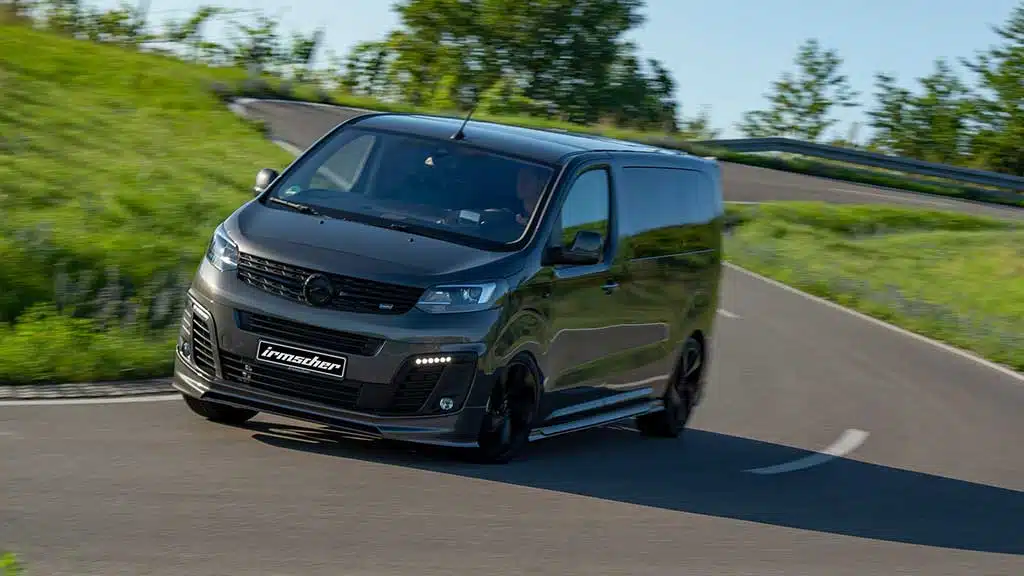
If you to equip the van with some study and new wheels, there are a lot of options available at Swiss Vans. The company offers wheels in 18” and 20”, and from a range of different brands like Aero Super-T, TTRS-2 and so on. Upgrading to tougher wheels can be beneficial for various reasons – such as a better driving experience, better fuel economy, and on-road durability.
When renting (or buying) a van from Swiss vans, you can also get interior upgrades to suit your liking. There are different things that you can do, such as:
And so on.
The splitters and custom grilles let you give the van a look of your own. There are multiple options available for that as well, and you can find the exact details by checking out the official page.
One of the things that makes Swiss Vans stand out even more is its customer support and satisfaction.
Customer satisfaction is a good metric that you can use to gauge the quality of a company. And when it comes to evaluating customer satisfaction, there isn’t much sense in just going for the word of the company itself. Rather, you have to check what people have to say about it on third-party platforms.
On Trustpilot, Swiss Vans has almost 1,200 user reviews and an average rating of 4.9.
Most of the reviews are by customers who are delighted by the support and care shown by the company’s representatives throughout their renting/buying experience. According to the reviews, the people at Swiss Vans are extremely well at responding to user queries and questions and guiding them throughout the process.

Some of the other reviews also talked about the customer support elements that Swiss Vans talks about on the official website. People had to say a lot about the doorstep delivery, for example.
Since this post is about why you should choose Swiss Vans for your van lease, we think that mentioning customer satisfaction and support is really important. For a lot of people, the interaction with the company and the way the entire process is handled can be a major deal maker or breaker.
If you are someone who is looking for a van leasing company where you can get detailed information and updates, and where the process is handled (certifiably) professionally, Swiss Vans is the place to go.
The rental prices for the vans are quite affordable at Swiss Vans. On the official website, the prices are cited per day or week. (For quotes for longer periods of time i.e., 3 – 12 months, you can give the company a call.)
Here is a glimpse of the prices that are cited by Swiss Vans on the official page.
The prices for the vans start from an average of £25 to £30 per day. You can expect these prices to become more reasonable when you opt for a longer rental period but even on a daily basis, the costs are quite affordable.
These are some of the reasons that you should choose Swiss Vans for your new van lease. Before we give this post the wrap, let’s take a look at some things that you should look for when leasing a van to make sure you go right with your choice.
We think mentioning this stuff here is important because, at Swiss Vans, there are a lot of available choices that you can pick from. If you’re careful about the one you choose, you’ll be able to get your work done and save costs at the same time.

There are different purposes for which you can require a van. You may need one for passenger transportation or you may need one for moving cargo, etc. There are specialized vans available for all these purposes.
Make sure you pick a van according to the specific purpose at hand. For moving cargo, Luton vans and Tipper vans are used. On the other hand, for moving passengers, minivans and normal small/medium-sized vans are used.
As we mentioned above, Swiss Vans has a daily, weekly, monthly, and even yearly pricing arrangement for van leases.
The more feature-rich and luxurious a van is, the pricier it gets. You have to make sure you pick one that fits your budget.
Even in vans made for a particular purpose, i.e., transporting passengers or cargo, there are different sizes that you can pick from. Make sure that you properly check the available options and pick one that is appropriate for your needs.
Swiss Vans is a popular and reliable van-leasing (and buying) company based in the UK. It is an excellent company that you can go to for your van-leasing needs.
The prices offered by Swiss Vans, coupled with the excellent service and the wide range of available vehicles, are some of the reasons you should try it out.
It is important to note, however, that Swiss Vans only operates in the United Kingdom i.e., Wales, Scotland, Ireland, and England. It does not operate globally as of yet, so you can only avail of its services if you are in the aforementioned areas.
Van Lease
Why Choose Swiss Vans for Your New Van Lease
Van financing is an important consideration if you’re looking to acquire one, whether for private or business use. The UK offers a significant number of van financing options to suit different driver circumstances. This has increasingly made it easier to acquire a new van without paying hefty initial amounts.
Today, vans are an essential part of individuals’ and corporations’ lives, accounting for a significant percentage of vehicles in the country. According to Finder, there were approximately 4.5 million registered vans in the UK by the end of 2022. In 2023, more than 300,000 vans were registered.
If you’re in the market for a new van, what financing option should you choose? Which one best suits your financial situation, and needs? In this comparative analysis, we’ll help you choose the right financing option.
Due to the popularity of vans in the UK, there are a handful of financing options to consider. Whichever option you go with, it should be specific to your needs. The options are categorized according to the intended use of the van: business financing and personal financing options. These are Hire Purchase, Personal Contract Purchase (PCP), and Contract Hire.
Traditionally, people were used to paying a deposit, followed by monthly instalments to buy a vehicle. That’s the basis of Hire Purchase and is still common even in today’s dynamic markets. Essentially, in HP, you make an initial deposit for the van, but it’s also possible to find deals with no upfront deposit requirements.
In any case, if there’s a deposit, it’s usually 10% of the van’s cost, but you can pay a higher amount. The more you pay, the lower your monthly deposits become. You pay the balance over an agreed period, and this includes the interest on this balance. At the end of the agreement period, you become the owner of the van. So, essentially, HP is hiring the van until you make the final payment to become the owner.
Some HP contracts may also have a small “option to purchase” fee that you’ll need to pay to own the vehicle. Your van financier will let you know if this applies in your case.
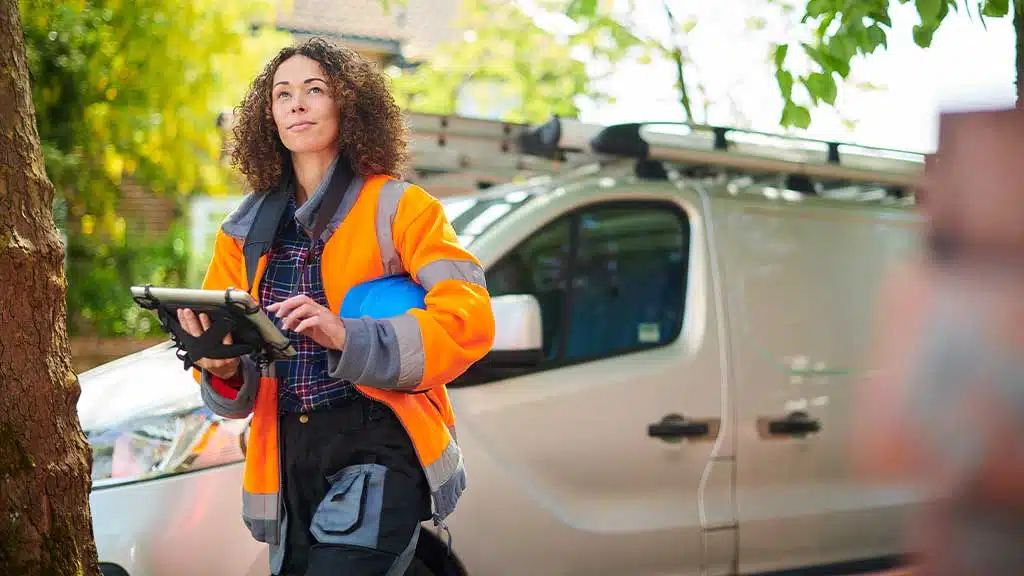
HP is great if you want to own the van, but want the rights to use it without limitations while you wait to complete your payment.
Since the monthly payments are not fixed (due to interest on the balance), it may not be the best for startups and mid-sized businesses. Instead, it can best suit individuals who want a van for personal use.
A personal contract purchase (PCP) works in the same way as HP financing, but with lower monthly fees. You’re required to pay the upfront deposit, usually 10% of the van’s cost, but you may also get a 0% deal. However, the cost will be higher in the long run.
After paying the deposit, you pay equal monthly instalments over the contract period. But the amount won’t cover the total cost of the vehicle. That’s where the balloon payment at the end of the agreement comes in. This allows you to own the vehicle, but you can also opt not to pay and instead return the van to the financier.

You’re better off choosing PCP if you want a van financing option with a lower financial outlay and known fixed monthly fees. Also, it’s suitable if you want to own the van at the end of the agreement.
In that case, it can best suit a business that is rapidly growing or wants to have a fleet of its own in the future.
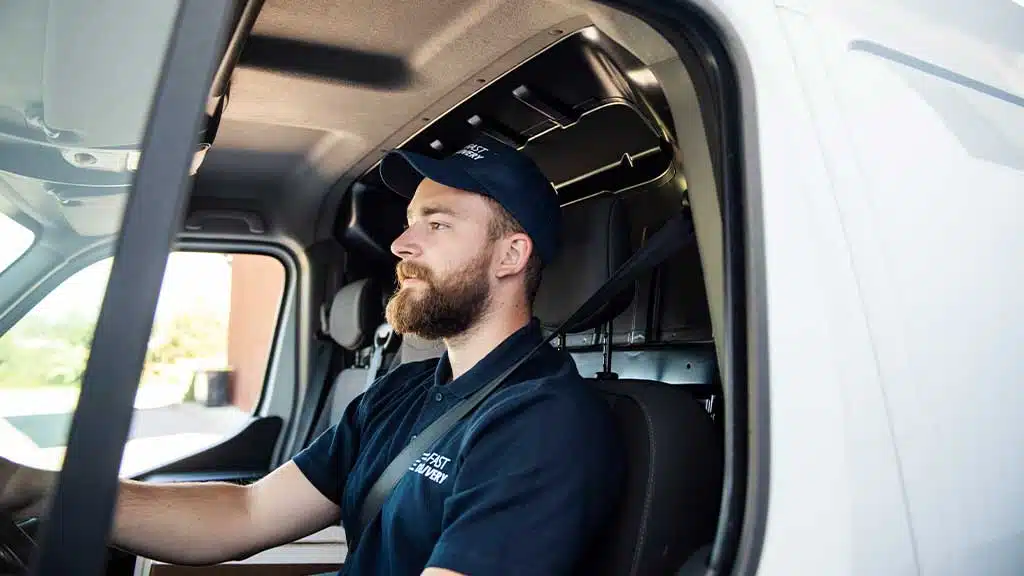
Contract Hire, also referred to as a van lease, is a long-term van rental agreement. It presents one of the most cost-effective ways to drive a brand-new van without hefty upfront costs. In this type of van financing option, you pay monthly fees to use the vehicle as if it were yours. You don’t own the van, nor do you have the ownership option. Instead, you simply return the van to the lender when the contract expires.
The length of a Contract Hire is usually between 12 and 48 months. Just like PCP and HP, you also pay an initial deposit before starting your monthly payments.
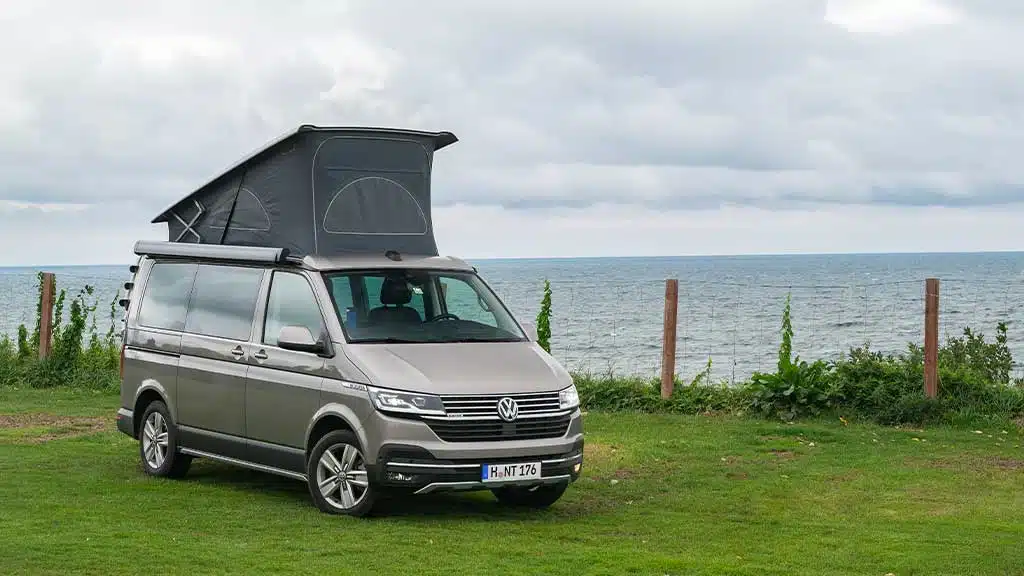
A Contract Hire best suits you if you want a van financing option with a lower financial outlay at the beginning. It’s also best if you want fixed monthly payments and don’t want to deal with the stresses of full vehicle ownership.
This option is suitable for startups with tight capital. Leasing the van allows you to direct the extra capital to run your business.
There’s no perfect financing option for everyone. It all depends on your unique circumstances, preferences, and budget. However, you should base your decisions on factors like ownership, monthly fees, mileage restrictions, and penalties for damages. Also, consider the flexibility offered at the end of the contract.
By closely looking at the pros and cons of each van financing option, you will be better positioned to pick the right option for you. If you still don’t have a clue about which option to go with, find a reputable lender to help you review the options.
Considering buying a Ford Transit Custom For Sale? Spacious, inventive, and dependable, the Ford Transit Custom has established itself as the leader of the medium van pack and is the most popular van sold. As one of the greatest one-ton vans available, the Transit Custom combines the convenience of short and long wheelbases with the power of a 2.2-litre TDCi diesel engine. Other standout design elements include an ergonomic driving posture with excellent sight and an easy-to-use interface. Here, we look at why it’s such a wise decision.
The size, intended function, and target market are the main distinctions between the Ford Transit and the Ford Transit Custom. The Ford Transit is a larger, full-size van with a higher payload capacity and ample cargo space that is perfect for heavy-duty commercial applications and larger transport demands. It is built for commercial use. It can accommodate a variety of business needs with its various body types, which include cargo vans, passenger vans, chassis cabs, and cutaway versions.
Conversely, the Ford Transit Custom is a mid-sized van that is more manageable and compact, making it a good choice for people or companies that need a flexible car for smaller-scale or urban operations.
The Transit Custom offers plenty of cargo space and useful features in a more compact design, even with its reduced size. It is especially well-liked by small and medium-sized businesses, who view it as a more affordable choice for those who appreciate agility and efficiency in their business vehicle but do not require the full-size Transit’s large capacity.
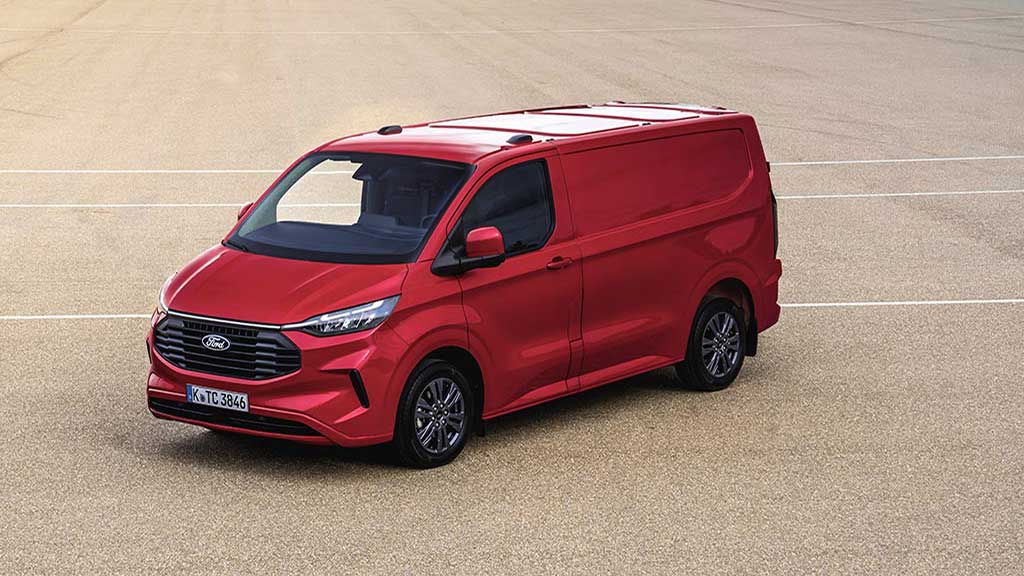
Transit Custom Vans have always been known for their durability, usefulness, and dependability. Now, the mid-sized van offers even more creative features and smart technologies. The Transit Custom Van is offered in a variety of powertrain options, including a plug-in hybrid van.
In addition, there are several roof and wheelbase combinations available if you require a high-roof van or are transporting larger goods. Whatever your company’s demands are, the Ford Transit Custom Van is designed to help you run more efficiently.
Here are the top features of the vehicle that compel everyone to consider investing in the Ford Transit Custom for sale.
Both the 130 PS and 170 PS engines come with a six-speed SelectShift automatic transmission. This is the basic powerplant on a variety of body designs and GVMs, and it’s intended to deliver a smooth, pleasant driving experience, particularly in congested stop-start traffic. If you choose, you can change gears manually by pressing the gear shifter buttons on the gear lever. It also allows you to lock out gears in more tough driving conditions like while you are driving on steep slopes or slick terrain.
Plug-in Hybrid Vehicles (PHEV) have all of the capability of full hybrid technology, with the added benefit of being able to charge from an external power source. The higher battery capacity allows them to achieve zero emissions when driving for distances of up to 56 kilometers, with the option to switch to Hybrid mode to conserve battery life and to petrol or diesel-only for longer trips.
The sophisticated electric powertrain may be charged at the mains and runs entirely on electricity for shorter trips. The van’s multi-award-winning 1.0 liter EcoBoost engine ensures exceptional efficiency even on extended travels. The Transit Custom Plug-In Hybrid van reduces local pollution while offering all the features and capabilities that you would expect from a Ford Transit custom for sale.
Parking has been made a lot easier in this model with the Active Park Assist feature. It’s not always simple to stop for a delivery on a busy roadway. especially with the restricted visibility and enclosed rear load room. After locating acceptable spots, Active Park Assist can safely maneuver your Transit Custom Van into them. All you have to do is regulate the gears and brakes. When you’re finished, Park-Out Assist can even help you avoid parallel parking lots again.

Geofencing is a feature of the Transit Custom plug-in hybrid that is intended to enhance the quality of the air in the surrounding area. When the Transit Custom Van detects that it has entered a low-emission or congested area, it will immediately switch to electric driving only. Additionally, users can designate unique “green zones” to cut emissions close to schools, warehouses, and urban areas.
The Transit Custom Plug-in Hybrid Van combines an EcoBoost 1.0-litre engine with a battery-powered electric motor. With selectable EV modes, you can alternate between driving power from the gasoline engine, the electric motor, or a combination of the two that uses less fuel. With a 56 km range, electric vehicles are only capable of producing zero emissions. Perfect for city operations, even in the recently implemented ULEZ.
This feature monitors the distance between your van and oncoming traffic and pedestrians, keeping an eye out for potential collisions. If you do not react when the system warns you of an impending collision, the brakes will be applied automatically. intended to go at up to 50 mph (80 kph) on regular roads.
There are several ways to keep your electric car charged, including using sophisticated self-charging equipment or connecting it to the mains. For a summary of the most popular methods to guarantee that your automobile is fully charged and prepared for use when you need it, watch this animation.
With so many possibilities at your disposal, customize your Transit Custom to meet your business’s demands. The optional Rear Liftgate Door10’s clever design enables you to load and unload even in the rain. To facilitate loading and unloading of your van from either side, you can choose the optional Dual Side Load Doors11 or the High Roof12, which provides more height for greater cargo volume. Transit Custom is designed to complete the task.
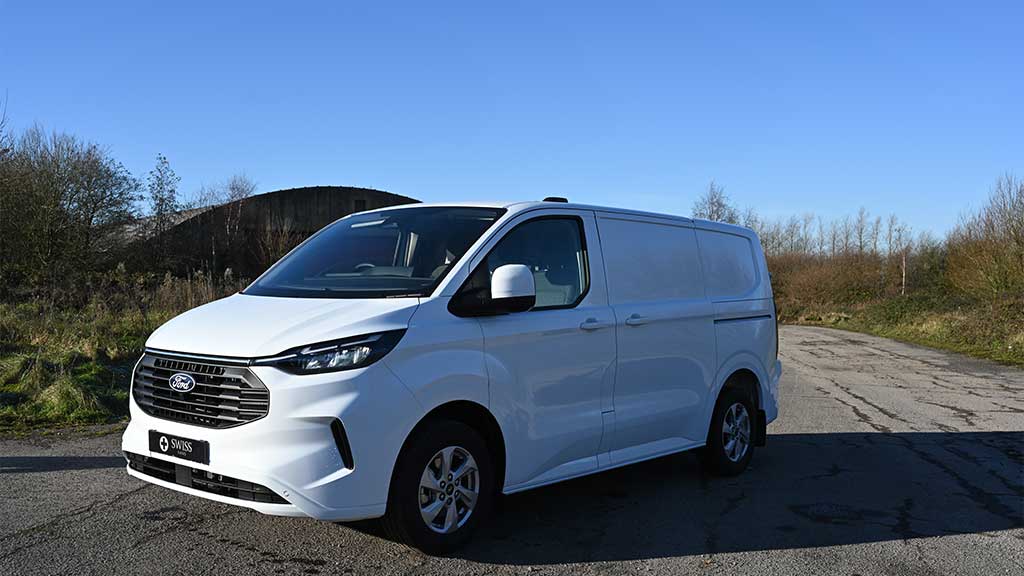
With the array of driver assistance systems that Transit Custom is equipped with to support you and your group while driving, you can drive with confidence. Autonomous Emergency Braking (AEB) with Pedestrian Detection, Blind Spot Monitoring System, Adaptive Cruise Control9, and Lane Keeping Aid with Lane Departure Warning are among the features. With its reverse camera and front and rear parking sensors, Transit Custom makes navigating construction sites, crowded parking lots, and confined places easier.
The ideal option for transferring personnel and goods is the Transit Custom Double Cab in Van (DCiV). The 340L DCiV has space for the entire crew with an extra 3 seats behind the driver and up to 6 seats overall. Desire room and style for your group. There is a DCiV version of the Transit Custom Sport as well.
Ford Transit Custom van proves to be an unmatched option for companies of all kinds, providing a reliable, adaptable, and efficient combination. The Transit stands out in the commercial vehicle market thanks to its maximized cargo space, excellent driveability, configurable layouts, great engine options, and pleasant driving experience.
The Ford Transit Custom for Sale is made to meet and surpass your needs while providing dependable performance, whether you’re a larger company looking to expand your fleet or a small business looking for a cost-effective solution. We encourage you to consider your alternatives if the Ford Transit van’s wealth of features and benefits match your needs for a commercial vehicle.
If you can’t afford to invest in a whole new model, you can consider renting the vehicle or going for used car models on sale. This will help you secure the model at a much cheaper price while leveraging all the benefits. Make sure to consider a trusted vendor who can help you secure a reliable Ford Transit Custom for Sale. This will ensure that you are getting value for the money you are investing in the van model.
Most people looking for a van in the UK, either for commercial or personal use, often struggle with whether they should purchase or lease the vehicle. Both the cases have their own pros and cons that should be thoroughly analyzed to make the right decision.
In this article, we’ll discuss the advantages and disadvantages of buying vs. leasing a van to help you decide-
The biggest advantage of buying a van is the ownership it comes with. Unlike leasing where you’re basically renting the van for a specified period, buying gives you ownership of the vehicle.
Even if you purchase the van through a loan, every monthly payment will get you closer to own a vehicle. Once the loan is fully repaid, you’ll be the rightful owner of the van. So, the purchased van is yours to keep and can be a valuable addition to your personal or business assets.
When you’re the owner of the van, you have complete freedom to customize it the way you like. This is especially useful when you need the van for commercial use as you can customize it according to the preferences and specific needs of your business.
Be it adding some specialized equipment, interior modifications, or branding, ownership provides complete flexibility to tailor the van as per your requirements.
When you take the van on lease, the lease contract will feature a fixed mileage for which you can use the vehicle during the lease period. Go beyond the mileage limit and you’ll be required to pay an additional fee depending on the extra miles. But with ownership, there are no such mileage restrictions.
You have complete freedom to use the van as much as required without worrying about any mileage limitations or extra costs.

Lease agreements also generally come with a host of other restrictions, which if you’re not fully aware of, could lead to significant expenses. For instance, if you’d like to terminate the lease before the decided lease period, you’ll have to pay a penalty fee.
There are other restrictions related to excessive wear, maintenance, etc., that could make the entire process of leasing more expensive. But you don’t have to worry about these restrictions or penalties if you own the van.
While the initial upfront cost of buying a van is higher than leasing, ownership can result in significant cost savings over time. Once the loan is fully repaid, you no longer have to worry about any monthly payments.
On the other hand, if you’re leasing the van, there will be an ongoing monthly payment as long as you use the vehicle.
One of the most significant reasons why many people prefer leasing a van is the higher upfront cost of purchasing. In the UK, you’re required to pay at least 10% of the van cost as a down payment when buying it through a loan. The down payment could be as high as 30% in some cases depending on loan eligibility.
For most people with limited capital, this higher upfront cost is a significant barrier. In comparison, leasing is considerably cheaper.
When you’re the owner, you’re fully responsible for anything and everything that goes wrong with the vehicle. Apart from the routine maintenance costs, there can also be expensive unexpected repairs as the van ages.
Irrespective of whether you’re using the van for commercial or personal use, these repair costs can put a considerable dent in your finances.
While you’ll have to pay for insurance irrespective of whether you’re buying or leasing the van, the premiums are generally higher with ownership. The owner is completely responsible for comprehensive coverage and potential liability of the vehicle.
Depending on the usage, make, and model of the van, the insurance premiums could be a significant ongoing cost with van ownership.

As a van owner, you’ll commit yourself to the same vehicle for several years. In most cases, you’ll be using the vehicle for at least 5-7 years. But what if during this period, the transportation needs of your business start to change? Or what if you’d like to upgrade to a newer van with improved features?
You’ll then have to get into the time and effort-consuming process of selling the existing van and then purchasing a new one. In most cases, buyers are unable to recover the initial investment of the existing van.
Another significant downside of buying a van is depreciation. With time, the market price of your van will fall due to depreciation. This will impact the resale value of the vehicle.
It is generally said that vehicles lose at least 15%-30% of their market price in the very first year. From the second year onwards, it continues to lose 10%-15% of its value every year on average.
If you’re concerned about the high down payment of purchasing a brand-new van, leasing can be a better option. Apart from the down payment itself, even the monthly payments of a lease are considerably lower than monthly loan installments.
The affordability of van leasing makes it a preferred choice for many people who want to acquire a van for personal or commercial use in the UK.
As discussed above, van buying requires you to commit yourself to a single model for many years. But with leasing, you can drive newer models with the latest features and technologies without the long-term ownership commitment.
This can be highly beneficial for businesses that abundantly rely on their van fleet for their day-to-day operations and want to maintain a reliable and modern fleet.
Most lease agreements allow you to either return the van or purchase it at the end of the lease. If you’d like to upgrade to a newer model, you can do so once the lease ends. Alternatively, if the van has become a critical part of your daily operations, you also have the option to buy it.
The flexibility to upgrade to a new van or purchase the leased van is another reason that makes leasing an excellent choice, especially for commercial applications.

When you lease a van, it is generally covered under the manufacturer’s warranty throughout the lease period. In other words, you can avoid significant repair costs if you maintain the vehicle as per the terms and conditions mentioned in the lease agreement.
Moreover, many van leasing companies offer a variety of add-ons like maintenance packages, roadside assistance, and more to offer enhanced convenience.
Leasing a van in the UK for commercial use can also offer a variety of tax benefits. For instance, businesses generally claim back a certain portion of VAT applicable on lease payments and deduct these payments as a business expense.
The tax benefits can offer considerable savings and enable companies to improve their bottom line.
The biggest drawback of van leasing is the lack of ownership. Unlike loan installments where each installment increases your equity in the van, monthly lease payments only contribute to van usage. Once the lease ends, you have to return the vehicle or enter into a new lease.
On the other hand, if you purchase the van through a loan, you become the owner once you fully repay the loan amount.
Another significant disadvantage of van leasing in the UK is the mileage restriction. If you exceed the mileage limit mentioned in the lease agreement, you’ll have to pay a penalty. And it is not always easy to know how many miles your van will be driven in a year when signing the lease agreement.
When you purchase the van, there are no such restrictions and you’re free to drive the van for as many miles as you want.
While lease agreements generally allow for normal wear and tear, you can be penalized for any damage that is beyond normal. If you don’t maintain the van as per the provisions of the lease agreement, the penalty can be steep in certain cases.

Thus, if you go ahead with a van lease, ensure that you also purchase the add-on maintenance package or insurance offered by the lease provider.
While the monthly lease payments are lower than loan installments, they’ll still amount to a significant sum in the long run. In many cases, the lease amount you pay over the years could be higher than the cost of purchasing the same vehicle.
So, if you’ll be using the van for several years and don’t mind the long-term commitment to a vehicle, buying can be a more cost-effective option.
Leasing agreements generally have restrictions on van customization. While they might allow you to make minor changes to the vehicle, significant customizations are generally not allowed. In a way, this restricts your ability to personalize the vehicle as per your requirements.
Needless to say, if you purchase the van, you have complete freedom to customize the van the way you want.
As you can see there are several pros and cons of buying vs. leasing a van in the UK. The selection between the two should ultimately depend on your specific needs and finances.
While ownership comes with equity build-up, customization freedom, and unlimited mileage, the higher initial cost can be a major deterrent. On the other hand, leasing offers benefits like lower upfront and monthly costs and access to newer models but it also comes with mileage restrictions, customization limitations, and no ownership.
Thoroughly analyze these pros and cons to make the right decision. If you’re unable to make a decision, let the experts at Swiss Vans help you out. As one of the leading van sellers and leasing specialists in the UK, you can rely on our expertise to decide whether you should buy or lease a van. Contact us today to know more.
At long last Full Hornet Pack
At long last Full Hornet Pack
Considering buying a Ford Transit Custom For Sale? Spacious, inventive, and dependable, the Ford Transit Custom has established itself as the leader of the medium van pack and is the most popular van sold. As one of the greatest one-ton vans available, the Transit Custom combines the convenience of short and long wheelbases with the power of a 2.2-litre TDCi diesel engine. Other standout design elements include an ergonomic driving posture with excellent sight and an easy-to-use interface. Here, we look at why it’s such a wise decision.
The size, intended function, and target market are the main distinctions between the Ford Transit and the Ford Transit Custom. The Ford Transit is a larger, full-size van with a higher payload capacity and ample cargo space that is perfect for heavy-duty commercial applications and larger transport demands. It is built for commercial use. It can accommodate a variety of business needs with its various body types, which include cargo vans, passenger vans, chassis cabs, and cutaway versions.
Conversely, the Ford Transit Custom is a mid-sized van that is more manageable and compact, making it a good choice for people or companies that need a flexible car for smaller-scale or urban operations.
The Transit Custom offers plenty of cargo space and useful features in a more compact design, even with its reduced size. It is especially well-liked by small and medium-sized businesses, who view it as a more affordable choice for those who appreciate agility and efficiency in their business vehicle but do not require the full-size Transit’s large capacity.

Transit Custom Vans have always been known for their durability, usefulness, and dependability. Now, the mid-sized van offers even more creative features and smart technologies. The Transit Custom Van is offered in a variety of powertrain options, including a plug-in hybrid van.
In addition, there are several roof and wheelbase combinations available if you require a high-roof van or are transporting larger goods. Whatever your company’s demands are, the Ford Transit Custom Van is designed to help you run more efficiently.
Here are the top features of the vehicle that compel everyone to consider investing in the Ford Transit Custom for sale.
Both the 130 PS and 170 PS engines come with a six-speed SelectShift automatic transmission. This is the basic powerplant on a variety of body designs and GVMs, and it’s intended to deliver a smooth, pleasant driving experience, particularly in congested stop-start traffic. If you choose, you can change gears manually by pressing the gear shifter buttons on the gear lever. It also allows you to lock out gears in more tough driving conditions like while you are driving on steep slopes or slick terrain.
Plug-in Hybrid Vehicles (PHEV) have all of the capability of full hybrid technology, with the added benefit of being able to charge from an external power source. The higher battery capacity allows them to achieve zero emissions when driving for distances of up to 56 kilometers, with the option to switch to Hybrid mode to conserve battery life and to petrol or diesel-only for longer trips.
The sophisticated electric powertrain may be charged at the mains and runs entirely on electricity for shorter trips. The van’s multi-award-winning 1.0 liter EcoBoost engine ensures exceptional efficiency even on extended travels. The Transit Custom Plug-In Hybrid van reduces local pollution while offering all the features and capabilities that you would expect from a Ford Transit custom for sale.
Parking has been made a lot easier in this model with the Active Park Assist feature. It’s not always simple to stop for a delivery on a busy roadway. especially with the restricted visibility and enclosed rear load room. After locating acceptable spots, Active Park Assist can safely maneuver your Transit Custom Van into them. All you have to do is regulate the gears and brakes. When you’re finished, Park-Out Assist can even help you avoid parallel parking lots again.

Geofencing is a feature of the Transit Custom plug-in hybrid that is intended to enhance the quality of the air in the surrounding area. When the Transit Custom Van detects that it has entered a low-emission or congested area, it will immediately switch to electric driving only. Additionally, users can designate unique “green zones” to cut emissions close to schools, warehouses, and urban areas.
The Transit Custom Plug-in Hybrid Van combines an EcoBoost 1.0-litre engine with a battery-powered electric motor. With selectable EV modes, you can alternate between driving power from the gasoline engine, the electric motor, or a combination of the two that uses less fuel. With a 56 km range, electric vehicles are only capable of producing zero emissions. Perfect for city operations, even in the recently implemented ULEZ.
This feature monitors the distance between your van and oncoming traffic and pedestrians, keeping an eye out for potential collisions. If you do not react when the system warns you of an impending collision, the brakes will be applied automatically. intended to go at up to 50 mph (80 kph) on regular roads.
There are several ways to keep your electric car charged, including using sophisticated self-charging equipment or connecting it to the mains. For a summary of the most popular methods to guarantee that your automobile is fully charged and prepared for use when you need it, watch this animation.
With so many possibilities at your disposal, customize your Transit Custom to meet your business’s demands. The optional Rear Liftgate Door10’s clever design enables you to load and unload even in the rain. To facilitate loading and unloading of your van from either side, you can choose the optional Dual Side Load Doors11 or the High Roof12, which provides more height for greater cargo volume. Transit Custom is designed to complete the task.

With the array of driver assistance systems that Transit Custom is equipped with to support you and your group while driving, you can drive with confidence. Autonomous Emergency Braking (AEB) with Pedestrian Detection, Blind Spot Monitoring System, Adaptive Cruise Control9, and Lane Keeping Aid with Lane Departure Warning are among the features. With its reverse camera and front and rear parking sensors, Transit Custom makes navigating construction sites, crowded parking lots, and confined places easier.
The ideal option for transferring personnel and goods is the Transit Custom Double Cab in Van (DCiV). The 340L DCiV has space for the entire crew with an extra 3 seats behind the driver and up to 6 seats overall. Desire room and style for your group. There is a DCiV version of the Transit Custom Sport as well.
Ford Transit Custom van proves to be an unmatched option for companies of all kinds, providing a reliable, adaptable, and efficient combination. The Transit stands out in the commercial vehicle market thanks to its maximized cargo space, excellent driveability, configurable layouts, great engine options, and pleasant driving experience.
The Ford Transit Custom for Sale is made to meet and surpass your needs while providing dependable performance, whether you’re a larger company looking to expand your fleet or a small business looking for a cost-effective solution. We encourage you to consider your alternatives if the Ford Transit van’s wealth of features and benefits match your needs for a commercial vehicle.
If you can’t afford to invest in a whole new model, you can consider renting the vehicle or going for used car models on sale. This will help you secure the model at a much cheaper price while leveraging all the benefits. Make sure to consider a trusted vendor who can help you secure a reliable Ford Transit Custom for Sale. This will ensure that you are getting value for the money you are investing in the van model.
Van financing is an important consideration if you’re looking to acquire one, whether for private or business use. The UK offers a significant number of van financing options to suit different driver circumstances. This has increasingly made it easier to acquire a new van without paying hefty initial amounts.
Today, vans are an essential part of individuals’ and corporations’ lives, accounting for a significant percentage of vehicles in the country. According to Finder, there were approximately 4.5 million registered vans in the UK by the end of 2022. In 2023, more than 300,000 vans were registered.
If you’re in the market for a new van, what financing option should you choose? Which one best suits your financial situation, and needs? In this comparative analysis, we’ll help you choose the right financing option.
Due to the popularity of vans in the UK, there are a handful of financing options to consider. Whichever option you go with, it should be specific to your needs. The options are categorized according to the intended use of the van: business financing and personal financing options. These are Hire Purchase, Personal Contract Purchase (PCP), and Contract Hire.
Traditionally, people were used to paying a deposit, followed by monthly instalments to buy a vehicle. That’s the basis of Hire Purchase and is still common even in today’s dynamic markets. Essentially, in HP, you make an initial deposit for the van, but it’s also possible to find deals with no upfront deposit requirements.
In any case, if there’s a deposit, it’s usually 10% of the van’s cost, but you can pay a higher amount. The more you pay, the lower your monthly deposits become. You pay the balance over an agreed period, and this includes the interest on this balance. At the end of the agreement period, you become the owner of the van. So, essentially, HP is hiring the van until you make the final payment to become the owner.
Some HP contracts may also have a small “option to purchase” fee that you’ll need to pay to own the vehicle. Your van financier will let you know if this applies in your case.
HP is great if you want to own the van, but want the rights to use it without limitations while you wait to complete your payment.
Since the monthly payments are not fixed (due to interest on the balance), it may not be the best for startups and mid-sized businesses. Instead, it can best suit individuals who want a van for personal use.
A personal contract purchase (PCP) works in the same way as HP financing, but with lower monthly fees. You’re required to pay the upfront deposit, usually 10% of the van’s cost, but you may also get a 0% deal. However, the cost will be higher in the long run.
After paying the deposit, you pay equal monthly instalments over the contract period. But the amount won’t cover the total cost of the vehicle. That’s where the balloon payment at the end of the agreement comes in. This allows you to own the vehicle, but you can also opt not to pay and instead return the van to the financier.
You’re better off choosing PCP if you want a van financing option with a lower financial outlay and known fixed monthly fees. Also, it’s suitable if you want to own the van at the end of the agreement.
In that case, it can best suit a business that is rapidly growing or wants to have a fleet of its own in the future.
Contract Hire, also referred to as a van lease, is a long-term van rental agreement. It presents one of the most cost-effective ways to drive a brand-new van without hefty upfront costs. In this type of van financing option, you pay monthly fees to use the vehicle as if it were yours. You don’t own the van, nor do you have the ownership option. Instead, you simply return the van to the lender when the contract expires.
The length of a Contract Hire is usually between 12 and 48 months. Just like PCP and HP, you also pay an initial deposit before starting your monthly payments.
A Contract Hire best suits you if you want a van financing option with a lower financial outlay at the beginning. It’s also best if you want fixed monthly payments and don’t want to deal with the stresses of full vehicle ownership.
This option is suitable for startups with tight capital. Leasing the van allows you to direct the extra capital to run your business.
There’s no perfect financing option for everyone. It all depends on your unique circumstances, preferences, and budget. However, you should base your decisions on factors like ownership, monthly fees, mileage restrictions, and penalties for damages. Also, consider the flexibility offered at the end of the contract.
By closely looking at the pros and cons of each van financing option, you will be better positioned to pick the right option for you. If you still don’t have a clue about which option to go with, find a reputable lender to help you review the options.
There’s no denying that driver safety training offers more perks for an organization than the hassle of implementing it. Whether your organisation targets staff welfare enhancement or improving driver safety, training can also help you cut costs. First, it can help enhance fuel efficiency when drivers follow the recommended safety precautions.
By avoiding road collisions, your organisation also saves more from unnecessary repairs, hefty insurance premiums, and expensive litigations. In short, the right safety training programme can have a far-reaching impact on your organisation.
Before jumping into finding the right training programme, what are you trying to achieve? Is it reducing road collisions? Lowering fuel expenses? Or transitioning your drivers to fully electric business vans? Whatever the reason, identifying your objective helps in choosing the right training programme.
To pick the right objective, you need to conduct a thorough risk assessment. Assess every staff member who drives company vehicles, whether daily or once in a blue moon. One effective way to do this is to include the assessment in staff induction. Ensure that it’s revisited regularly to help you identify and account for every driver’s changing circumstances.
Some of the risk factors to assess include fatigue, vehicle maintenance problems, distracted driving, and driving in adverse weather. Build a risk score that aggregates these and many other factors to help your fleet managers easily identify drivers with higher risk levels.
The fleet managers can then examine the performance score of each driver to identify the most needed safety training.
While there may be other ways of collecting data when the driver is on the road, the most effective way is through telematics. Telematics employs communication devices to collect, store, transmit and receive information over long distances. You can use it to collect information about the driver’s behaviour, such as speeding, acceleration at risky points, cornering, harsh braking, and more.

Telematics is equally useful in gathering information such as fuel usage and mileage. By collecting and analysing this data, you can identify drivers who can benefit the most from safety and eco-driver training programmes.
If you’re rolling out a stream of electric vans, your drivers are probably encountering this auto technology for the first time. Training is therefore vital to introduce them to the minute but crucial differences between electric and internal combustion engine (ICE) vans.
A few of these differences include higher instant acceleration, decelerating more when stepping off the accelerator, and how to refuel regenerative braking. Each of these factors in an electric vehicle comes with safety implications.
Besides equipping your team of drivers with expertise in driving electric vans, it helps a lot to counter range anxiety. This is one of the biggest obstacles to the widespread embrace of EVs. It’s the fear of an EV’s battery power running out before the destination.
It’s common for companies to train their drivers when introducing electric vehicles. EV safety training helps drivers to benefit the most from an electric vehicle before starting bad driving behaviours. Safety-wise, it helps eliminate driver distraction by introducing them to the seemingly fancy yet unfamiliar technology. After receiving their EV training, drivers can also adjust their driving procedures and routines, which goes a long way toward enhancing road safety.
Any successful driver safety initiative greatly relies on the successful implementation of a comprehensive driver safety training programme. It’s worth noting that there’s no single-best driver training programme. Rather, the best one greatly depends on the individual requirements of a driver, and their performance during the risk assessment.
Depending on the outcome of the risk assessment, you may need to roll out two versions of the training: online and hands-on. Drivers with low safety risks may only need the online training programme. On the other hand, high-risk drivers require hands-on training on the road.

If the assessment outcome rates a high-mileage driver as a high risk, they should receive on-road safety training. This will equip them with practical, hands-on skills. Additionally, the feedback of an experienced fleet trainer helps them identify their weak points and work on rectifying them.
These drivers can benefit more from topics like defensive driving, hazard recognition, emergency response protocols and vehicle inspection procedures. Ensure the training sessions are interactive, with simulations or real-life scenarios.
Low-risk drivers as well as those with specific requirements are better suited for modular e-learning programmes. This category of drivers may also need a webinar to bring them up to speed with the necessary road safety skills.
The risk assessment may also rate some drivers as moderate risk. These, in most cases, are occasional drivers who may have a past with speeding endorsements. For such a category, come up with a group training session primarily targeting speed management.
Instead of spending time creating a full-fledged driver safety training programme, simply create a group webinar. Webinars are less time-consuming and offer an inexpensive way to impart knowledge to moderate risk drivers. They’re most appropriate for drivers who occasionally drive to work.
After assessing your drivers, you come up with a profile for each driver. This is crucial to implementing successful safety training. It helps you identify the training objective, craft a plan, and categorise drivers according to their needs.
Don’t forget that the training may face some sort of resistance due to some drivers feeling that they don’t need training. Some drivers may be reluctant or feel like they’re being subjected to performance grilling. To deal with this, conduct a driver education or awareness to let them understand the importance of safety training.

Create an environment that encourages drivers to willingly participate and openly share their experiences. When drivers feel more comfortable taking part in the training, it promotes a culture of constant improvement. It also increases the chances of success for the programme.
Fleet managers in charge of the training are also likely to feel overwhelmed when there’s no clear objective. Create a proper training and reporting plan, so your team leaders know the procedure for conducting the training. All reporting that happens should then be based on the process in place.
As for your drivers under training, make the programme enjoyable for them. Instil the belief that the training is not a punishment (of course, it isn’t) and therefore should be enjoyed. Create some sort of reward for every level a driver passes successfully. When the training is done with the driver fully engaged with a positive mindset, it is always effective.
Make it known to your team that completing the driver safety training programme is a crucial part of complying with the requirements of workplace safety regulations. Enlighten the staff to understand that the training is part of the company’s fundamental duty to maintain the safety of its staff.
There’s a cost to be incurred to ensure the success of the training programme. If you use external driver safety training service providers, you’ll need to shop around to find the best quotes for your programme. Your fleet managers must consider these costs and factor them into their budget.
After driver training, the business needs to implement strategies that promote driver safety on the road. Here are some considerations to keep in mind:
Driver safety isn’t a one-time thing; it should be a routine conducted from time to time. Doing this ensures your drivers are not only compliant with regulations but also work towards improving their own welfare.
Also, your programme should adapt to the changing circumstances of drivers. Regularly review your drivers’ performance through data analysis and feedback. By regularly conducting the training programme, you safeguard the long-term success of your driver safety training initiative.

As much as you’re focused on driver safety training, the vans they drive must be in good condition. Stick to your routine maintenance plans to prevent breakdowns. Regular vehicle checks and maintenance help prevent vehicle failures that can lead to accidents.
Invest in vans with advanced safety features such as stability control, automatic braking systems, traction control systems, electronic stability control, and more. Most of the modern vans on the market today come with these and many more features. Examples include the new VW Transporter, Mercedes-Benz Vito, and Ford Transit Custom.
Fatigue is one of the major causes of fatalities on the road. Your drivers must get ample time to rest and adhere to the maximum driving hours requirements. To ensure they strictly follow these requirements, use fleet management systems with monitoring features.
An excellent choice of fleet management solution is the Geo2 transport management system. It comes with features such as real-time tracking, offering immediate response during emergencies. Additionally, it allows fleet managers to optimise routes and ensure your drivers follow the most efficient and safest paths.
Implementing a van driver safety programme is a multi-faceted encounter that demands your team’s commitment and collaboration. When you make your staff understand the importance of safety training, you improve the success rate of the programme. Before rolling out the programme, conduct a comprehensive risk analysis to categorise drivers according to their risk level. This helps to ensure you offer the right training required by a driver. Through a proactive safety training approach, your organization can create a safe environment that benefits everyone.
As a commercial vehicle owner in the UK, there are certain responsibilities you must fulfill to ensure compliance with regulations, safeguard your finances, and protect your business interests. One of the most important of them is purchasing the right insurance coverage.
No matter if you’re a sole proprietor having a single van or a large business with a fleet of commercial vans, understanding the intricacies of commercial vehicle insurance is essential. In this article, we are providing a comprehensive overview of commercial vehicle insurance in the UK, legal requirements, types of coverage available, and more. So, let’s begin-
As the name suggests, commercial vehicle insurance is exclusively designed to protect vehicles that are used for business purposes. Unlike insurance purchased for personal vehicles, commercial vehicle insurance covers risks associated with operating vehicles involved in commercial use, such as transporting goods or people, making deliveries, or offering services.
These insurance products are generally purchased for vehicles like vans, trucks, mini-busses, LGVs (Large Goods Vehicles), HGVs (Heavy Goods Vehicles), etc., that are commonly used for commercial applications.
Moreover, there are various types of commercial vehicle insurance policies based on factors such as the type of vehicle being insured, intended use, and size and scope of your business. For instance, a sole proprietor operating a single delivery van may require different coverage compared to a large logistics company managing a fleet of LGVs for long-haul transportation.
Under the UK’s Road Traffic Act (1988), it is mandatory for every motor vehicle on the road to have at least the minimum level of liability insurance required by law. This includes vehicles used for commercial purposes such as transportation, deliveries, and trades.
Uninsured vehicles can be fined up to £300 and the driver will also get 6 to 8 points on the license. Moreover, if the offense reaches the court, it could lead to additional penalties like driving disqualification and hefty fines. Thus, it is imperative for commercial vehicle owners in the UK to maintain proper insurance coverage at all times.
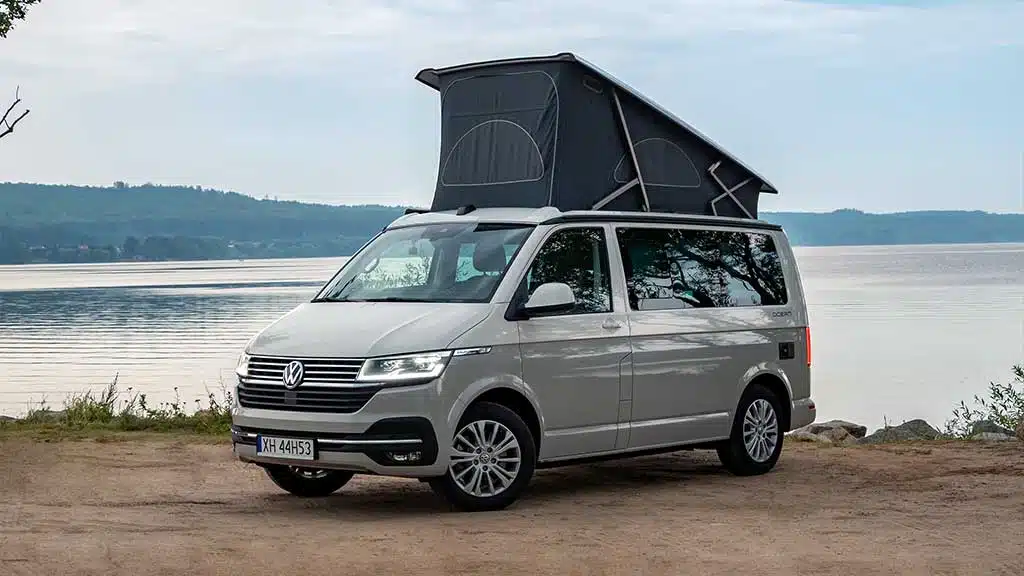
Various types of commercial vehicle insurance plans are available in the UK to meet the diverse needs of businesses. Three of the most common ones are- third-party, third-party fire and theft, and comprehensive insurance. Here’s a quick overview of these commercial vehicle insurance plans-
Third-party insurance or liability insurance is the minimum legal requirement for all the vehicles plying on the UK roads, including commercial vehicles. It offers basic coverage for damages and injuries sustained by third parties in accidents where the insured driver is at fault. Here are some highlights of third-party insurance for commercial vehicles-
Apart from everything that a third-party insurance policy covers, third-party fire and theft insurance also covers fire damage and theft. So, along with covering damages and injuries to third parties in accidents, this type of insurance also covers-
For enhanced safety against unforeseen events, businesses consider investing in comprehensive commercial vehicle insurance plans. They offer coverage for an extensive range of risks, including-

Apart from the three commercial vehicle insurance products discussed above, there are a few other types of insurance policies that you can consider for specific business needs. For instance, you can find collision insurance that covers damages to the insured vehicle in the case of a collision. Similarly, there is cargo insurance for businesses involved in transporting goods.
Many factors influence the premiums of commercial vehicle insurance. Here are some of the most important ones-
The biggest factor that impacts insurance premiums is the type of commercial vehicle being insured. Heavier, larger vehicles such as HGVs generally incur higher premiums due to their higher replacement costs and increased potential for causing damage in the case of an accident.
On the other hand, smaller vehicles like vans or cars used for commercial purposes generally have lower insurance premiums.
The number of miles annually driven by the vehicle directly correlates with the risk of breakdowns or accidents. Vehicles that cover longer distances have a higher probability of getting into an accident, subsequently leading to higher insurance claims and higher expenses for the insurance provider.
As a result, commercial vehicles with higher annual mileage generally have higher premiums compared to ones with lower average annual miles.

Another aspect that insurance providers take into consideration is the driving history of the insured driver to determine the level of risk they’ll pose. Drivers with a clean record are considered low-risk and may qualify for lower premiums.
However, drivers with a history of accidents or traffic violations are considered riskier and might have to pay higher insurance premiums.
Implementing effective security measures can help minimize the risk of theft or damage to commercial vehicles. Installing anti-theft devices like GPS trackers, alarms, etc., makes it more difficult for thieves to steal vehicles or their contents and reduces the risk of loss for insurers.
Insurers reward such security installations on commercial vehicles by reducing insurance premiums.
The claims history of a business also has an impact on the insurance premiums. Insurers assesses the frequency and severity of previous claims to gauge the likelihood of future claims. Businesses with a history of frequent claims, be it due to accidents, theft, or other incidents are perceived riskier and may have to pay higher insurance premiums.
But if a business has a fairly clean claims history, it might qualify for lower premiums as they pose less risk to the insurers.
Here are some tips to help you choose the right commercial vehicle insurance-
Most businesses would want to go with the cheapest insurance policy. However, it is essential to check the coverage limit of the policy and compare it with the potential risks and needs of your business.
Before choosing, ensure you assess the value of your commercial vehicle, the nature of your business, and the potential financial implications of accidents or other incidents and try to strike a balance between affordability and adequate coverage.
The deductible is a certain amount the policyholder is responsible for paying while the rest is covered by the insurer in the event of a claim. So, a lot of businesses choose higher deductibles to reduce the insurance premiums.
But while higher deductibles can offer savings through lower premiums, it also puts you at more risk as the out-of-pocket expense will be higher in the case of an accident.

Commercial vehicle insurance plans often include exclusions or limitations specifying what is not covered under the policy. Ensure that you review these exclusions carefully to understand the scope of coverage and avoid any surprises in the event of a claim.
By understanding these exclusions upfront, businesses can make informed decisions about their insurance coverage needs and address any gaps through supplemental policies if necessary.
It is recommended that you gather quotes from multiple insurance providers so that you can compare the available options and choose one that is both cost-effective and offers adequate coverage as per your requirements.
Thanks to the internet, you can easily gather quotes and even purchase insurance online. There are also dedicated insurance comparison tools online that you can use to easily compare the available options.
Now that you know all the basic details of commercial vehicle insurance, start comparing the top choices and make the right decision. Ensure that you choose a reputable insurance provider and thoroughly go through the policy documents before making the final decision.
If you’re looking to lease or purchase a van in the UK, Swiss Vans can help. With one of the widest networks of suppliers and manufacturers across the UK, we can fulfill your van requirements at the earliest and at the best prices. Contact us today to discuss your van requirements.
With the growing concerns related to global warming, the world is steadily moving towards sustainable and eco-friendly practices. And the automobile sector is no different. One of the most significant outcomes of this paradigm shift is the introduction of electric vehicles.
For instance, businesses concerned about their carbon footprint and wanting to embrace environment-friendly alternatives are upgrading their fleet with electric vans. But while electric vans can offer a host of business benefits, the switch to this new-age mode of transport also presents several challenges.
Let us take a deeper look at the impact of electric vans on the commercial sector-
Electric Vehicle or EV adoption is steadily rising in the commercial sector due to the growing need for sustainable transportation alternatives. An increasing number of businesses across the world are recognizing the valuable benefits of EVs like electric vans in reducing their environmental impact, enhancing operational efficiency, and cost savings.
Some of the top advantages of electric vans include-
The biggest advantage of electric vans in the commercial sector is their eco-friendly build. The traditional fuel-powered vans significantly contribute to air pollution and greenhouse emissions. But electric vans are powered by batteries and produce zero tailpipe emissions. Thus, they help mitigate the harmful impact of traditional fuel vans on climate change and air pollution.
Apart from helping the environment, a business committing itself to eco-friendly practices also improves its image and fosters positive relationships with consumers who are becoming increasingly environmentally conscious.
Another considerable benefit of electric vans is the efficiency they add to your day-to-day operations. The traditional vans feature ICE (Internal Combustion Engine), which is known to be noisy and generate substantial vibrations. But electric vans are known to be smooth and quiet. As a result, they help reduce noise pollution and create a more a more positive work environment for your crew.
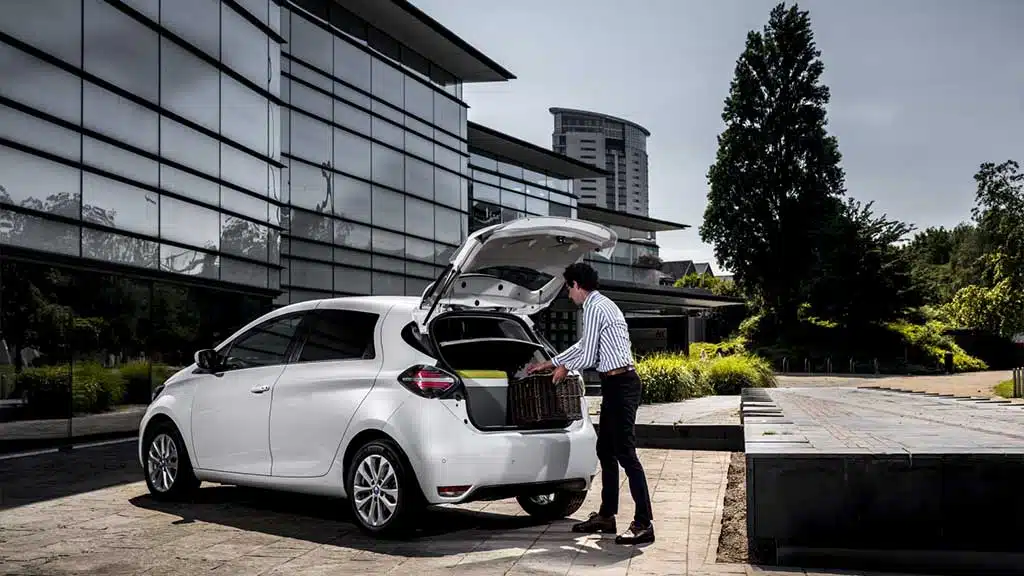
Moreover, electric vans offer instant torque and quick acceleration to deliver improved performance. These benefits translate into improved operational efficiency, especially for businesses involved in delivery and transportation services.
Electric vans are generally more expensive than traditional fuel-powered vans. But while the upfront investment is higher, they do offer significant savings in the long run. To begin with, electric vans do not need fuel. And with the fuel costs consistently rising, this aspect alone can help a business save a considerable amount of money.
Also, EVs have fewer moving parts, resulting in lower maintenance costs. Moreover, governments in many countries offer incentives, subsidies, and tax credits to encourage EV adoption. In the UK, you can be eligible for a grant of up to £2,500 on the purchase of a smaller electric van and up to £5,000 on larger electric vans.
The regulatory landscape with regard to emissions is undergoing significant changes globally. The governments are making the emission norms more stringent to address air quality concerns and climate change. For instance, diesel and petrol vans in the UK should comply with Euro 6 and Euro 4 emission rating guidelines respectively.
As electric vans do not produce any tailpipe emissions, they can help you ensure that your fleet always remains compliant with the stringent regulations. This can help businesses protect themselves from potential fines, future-proof their fleet, and exhibit a proactive approach to corporate responsibility.
Apart from the environmental and operational advantages, the transition to electric vans also influences your workforce in terms of satisfaction and talent retention. The quiet and smooth functioning of EVs contributes to a more pleasant and comfortable driving experience. This directly influences the satisfaction levels of your drivers and crew.
Satisfied employees are more likely to remain with your company, reducing turnover rates and associated recruiting costs. Moreover, your latest fleet of electric vans can also attract top talent by serving as a powerful tool for recruitment in a highly competitive job market.

As mentioned above, the switch to electric vehicles comes with its share of challenges. To encourage widespread acceptance, it is necessary to address these challenges. Some of the most common ones are as follows-
A common concern for businesses wanting to upgrade to electric vans is the limited driving range. If the trip is not planned thoroughly, the battery pack of the electric vehicle may run out of charge before reaching the destination.
While battery technologies have advanced significantly in the last few years and EVs now come with better range, the challenge requires the development of a robust charging infrastructure. The government and private entities should collaborate to build a charging network across the UK so that businesses can confidently switch to electric vans.
Another significant concern for businesses is the charging time of electric vans. Unlike the convenient and quick refueling process of traditional vans, the charging time required by EVs can pose significant challenges, especially for businesses where quick turnaround times and efficiency are critical.
However, the advancements in fast-charging technology have steadily reduced the charging times. Another innovative technology that is gaining popularity is battery swapping. Rather than waiting for the battery to charge, the depleted battery can be quickly replaced with a fully charged one.
The upfront cost of electric vans is often higher than traditional fuel-powered vans. This is a significant barrier for businesses like small and medium-sized enterprises (SMEs) with limited resources.
The government has a critical role to play in this regard as it can offer tax breaks, incentives, and grants to encourage EV adoption among businesses. In the UK, the government offers tax incentives on the purchase of small and large electric vans. Even financial institutions have introduced favorable financing options to make the transition to EVs less expensive.

Compared to traditional vans, EVs have a simplified mechanical structure and fewer moving parts. However, specialized knowledge is required to address the issues that might arise. It can be difficult for businesses to find skilled technicians with expertise in EVs when something goes wrong.
To mitigate this issue, businesses should invest in training to equip employees with the essential skills to diagnose and repair electric vans. Businesses must also collaborate with service centers specializing in EV maintenance to ensure their vans deliver optimal performance.
With battery technologies changing at a rapid pace, another concern for businesses is regarding the resale value of electric vans. If developments continue at the current pace, older models could easily become outdated or less competitive in the market within a few years.
Thus, businesses should adopt strategies that account for the evolving nature of technologies that power EVs. Moreover, as this problem becomes more common in the future, manufacturers will mostly start offering flexible upgrade options, allowing businesses to replace their existing EVs with one of the latest models at discounted prices.
Now that you know some of the most important benefits and challenges of electric vans for businesses, let us also take a quick look at some of the top reasons for switching to EVs-
Adopting electric vans aligns with the growing emphasis on sustainable business practices. An increasing number of commercial entities are recognizing the need to minimize their environmental impact throughout their operations.
Electric vans significantly contribute to this sustainability initiative by offering a cleaner and greener mode of transportation. In turn, this will enhance the overall sustainability profile of your business and make it more appealing to consumers and investors who are environmentally conscious.

EVs are a lot more than just vehicles. They are integrated with a host of smart technologies which make them more efficient, safer, and cost-effective. For instance, the latest models come with advanced connectivity options and various features like smart co-pilot, facial recognition, and a lot more to pave the path for newer possibilities.
With the help of these advanced features, businesses can optimize route planning, monitor the location and performance of their vans in real time, save fuel, enhance security, and improve overall fleet management. Apart from operational efficiency, these technologies are also setting the stage for a more intelligent and interconnected transportation ecosystem.
The widespread adoption of electric vans in the commercial sector also has a broader economic impact. As the demand for EVs and associated technologies increases, there is also a ripple effect on several other industries. For instance, the manufacturing sector will witness a surge in the production of EV components and infrastructure.
Moreover, the rising need for skilled technicians who excel in EV maintenance will also create job opportunities. Thus, the transformative potential of electric vehicles extends beyond individual businesses and can significantly contribute to economic growth and job creation.
While EVs are making their presence felt in the passenger vehicle segment in the UK and across the world, the pace is not the same in the commercial sector. As discussed above, electric vans can surely benefit businesses in several ways but various challenges must be addressed in order to encourage the adoption.
The manufacturers and the governments are steadily working towards these obstacles so that businesses and individuals can confidently upgrade to electric vehicles.
If you’re looking to purchase or lease a commercial van in the UK, Swiss Vans can be the right companion. With over 30 years of industry experience and a vast industry network, we can help you procure the preferred van for your business. Contact us today to know more about our services.
Practicality, efficiency, and sustainability are keys to the success of modern businesses. If your daily operations abundantly revolve around transportation, the same benchmark applies to the commercial vans you use.
While there is no shortage of van models with innovative features and designs to keep up with the growing needs of businesses, they are no replacement for customization.
By customizing a commercial van, you can upgrade or redesign the vehicle in a way that fully meets the requirements of your business. Moreover, it can also help make the vehicle safer for you and your crew. A customized van also looks more professional and works in the favor of your brand.
So, what are the customization options available for commercial vans? Let’s take a look-
You and your crew would be spending a good amount of time inside the van. Thus, it makes sense to start with customizing the vehicle interiors. Today, the van interiors are a lot more than mere storage spaces. You can convert it into a fully functional mobile office or even a mobile retail outlet.
Here are some of the interior customization options for a commercial van-
One of the biggest inconveniences for businesses that use vans for day-to-day operations is the available storage space. With customization, you can ensure every inch of the storage area is utilized to the maximum.
You can now find an extensive range of shelving units that can help enhance the storage space of your van. You can also consider customized drawers and cabinets to securely store all your tools, equipment, and inventory.
Many of the van models don’t feature a partition between the driver’s cabin and the cargo area. You can consider adding this partition to prevent objects from shifting forward during transit.
You can also find custom partitions with built-in storage to expand the storage capacity of the cargo area. If you’re concerned about rear visibility after installing the partition, you can also customize it to feature a window.

Replace the existing seats with the latest seating options that come with ergonomic capabilities to enhance driver and passenger comfort, especially on longer journeys.
Look for seating options equipped with lumbar support, height adjustment, and heaters for a more ergonomic and enjoyable driving experience.
Why just work from home when you can work from anywhere? Thanks to modern technologies, you can conveniently convert your van into a mobile office.
For building a fully functional office inside the commercial van, you can consider adding foldable desks or workbenches and adjustable seating arrangements for a comfortable and productive working environment.
Safety is a significant concern in any outdoor commercial environment. The flooring of the vehicle deserves special attention in this regard.
To enhance the safety of your commercial van, you can look for a durable and non-slip flooring option. Custom rubber mats designed as per the dimensions of your van can improve safety, protect the floor from wear and tear, and also reduce vibration and noise.
Lighting is another aspect that is vital to safety. This is especially true for those who regularly work in dimly lit areas or during the night.
Lighting options like task lights, motion-activated lights, and LED light strips can be strategically placed to ensure the work area is properly illuminated.
Exterior customization can also help enhance the efficiency and productivity of the commercial van. Moreover, the exteriors are also valuable for branding purposes as it is the first thing that passersby and customers notice. Here are some ways to customize the exteriors of your commercial van-
Roof racks are an effective way to further expand the load-carrying capacity of your commercial van. The rack can be used for carrying equipment, pipes, ladders, etc. that is difficult to store inside the vehicle.

If you want to install a roof rack, you must also add a ladder system to ensure your crew can conveniently access the roof as and when required.
Upgrading the tires of your van is one of the most effective ways to enhance overall performance and safety. The latest tires come with improved tread patterns to offer better traction on the road and improve handling.
Moreover, the tires also play a vital role in the load-bearing capacity of the vehicle. If your van regularly carries heavy loads, upgrading the tires can prevent premature tire wear and ensure optimal performance.
Commercial vans are powerful marketing tools. You can customize them in many different ways to promote your brand and make it stand out in the traffic.
For instance, you can consider painting the van as per your brand guidelines. Another option is a graphical wrap with your brand colors and logo.
Just like interior lighting, you can also think about customizing the exterior lighting of your van. You can now find a wide range of spotlights, undercarriage lighting, and LED light bars that could assist your workers when working in poorly lit environments.
Moreover, you can also be creative with the exterior lighting of your business van to make a lasting impression on the passersby.
Challenging terrain is an everyday affair for many businesses. You can equip your van with a variety of off-road enhancements to ensure that it is prepared for extreme conditions.
Reinforced skid plates, heavy-duty tires, and lifted suspension are some of the upgrades you can consider for your commercial van.
Adding a custom grille to a commercial van also offers various benefits in terms of functionality and aesthetics. For instance, there are grille models that are optimized for improved airflow and better ventilation. Grill designs with larger openings and mesh patterns can also improve the engine cooling efficiency of the van.
Moreover, with a custom grille, businesses can incorporate their colors, logo, and other branding elements for a distinct look.
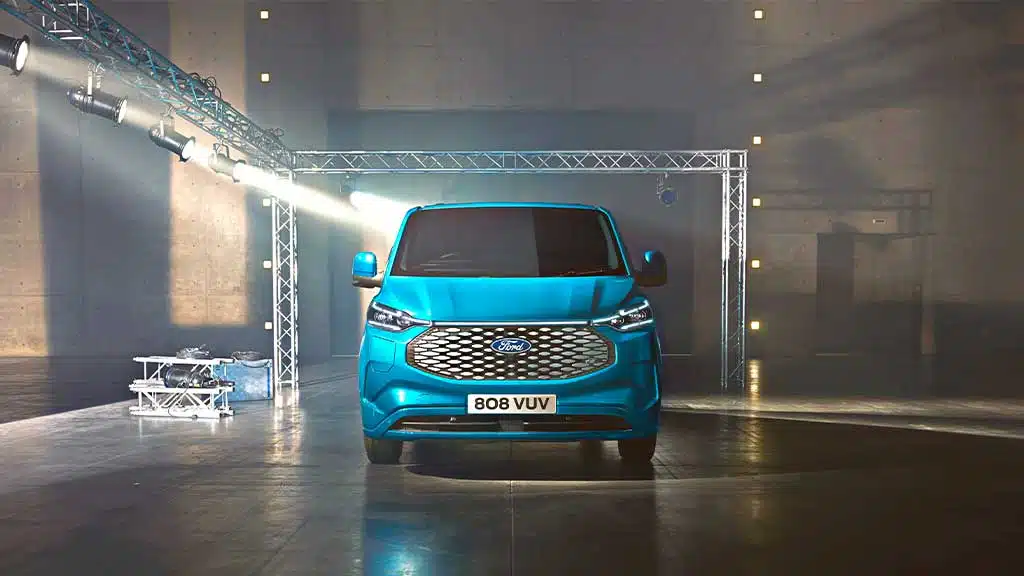
Technological advancements have transformed vans from what they used to be a decade ago. The innovations have significantly improved the safety, efficiency, and customization possibilities of commercial vans. Here are some tech upgrades you can add to your business van-
If you have a transportation or delivery-based business and are looking for ways to enhance the efficiency of your daily operations, you must consider integrating your vans with GPS and fleet tracking systems.
With the help of these systems, you can track the location and performance of your vans in real time. Apart from operational efficiency, they also contribute to improved route planning and fuel optimization.
You can also equip your commercial van with communication systems, like Bluetooth or two-way radios to enhance efficiency and coordination for mobile teams.
A Wi-Fi hotspot is another feature you should consider adding to keep the team connected and boost productivity.
To improve safety and reduce the risk of accidents, you can consider equipping your commercial van with backup cameras and sensors. These technologies make it easier for the driver to have a clear view of their surroundings, especially in tight and crowded areas.
For added safety, you can also install systems that come with features like collision detection and lane departure alerts.
You can take the security of your commercial van to the next level by equipping it with exterior cameras and surveillance systems. These systems act as a deterrent and also offer valuable footage in case of incidents.
If your crew regularly carries expensive equipment, cargo, or sensitive documents, you can add an extra layer of safety with smart locking systems and biometric access controls.
Want to make your fleet more environment-friendly? Consider installing a solar system on your commercial van. Solar panels harness energy from the sun, making it a clean and renewable power source.
The electricity generated by the solar system can be adequate for managing the electricity needs of lighting, HVAC systems, and other electronic devices installed in the van.

Voice-activated controls enable hands-free operation, ensuring the driver stays focused on the road even when accessing various features available in the van. This can significantly reduce distractions, improve safety, and offer a more convenient driving experience.
With the help of these systems, drivers can control communication, navigation, AC/heater temperature, and certain other vehicle features.
If you’re looking to get your commercial van customized, these are some of the interior, exterior, and tech upgrades you can consider. Ensure that you choose a reputed van customization service provider like Swiss Vans for optimal results.
From interior upgrades, splitters and custom grilles to alloy wheels, we offer a wide range of customization options to choose from. We also offer our exclusive WASP and Hornet packages for all the popular van models from leading brands like Volkswagen, Ford, Mercedes-Benz, and more, providing businesses with tailored solutions as per their requirements.
Contact Swiss Vans today to know more about our van customization services.
Most people looking for a van in the UK, either for commercial or personal use, often struggle with whether they should purchase or lease the vehicle. Both the cases have their own pros and cons that should be thoroughly analyzed to make the right decision.
In this article, we’ll discuss the advantages and disadvantages of buying vs. leasing a van to help you decide-
The biggest advantage of buying a van is the ownership it comes with. Unlike leasing where you’re basically renting the van for a specified period, buying gives you ownership of the vehicle.
Even if you purchase the van through a loan, every monthly payment will get you closer to own a vehicle. Once the loan is fully repaid, you’ll be the rightful owner of the van. So, the purchased van is yours to keep and can be a valuable addition to your personal or business assets.
When you’re the owner of the van, you have complete freedom to customize it the way you like. This is especially useful when you need the van for commercial use as you can customize it according to the preferences and specific needs of your business.
Be it adding some specialized equipment, interior modifications, or branding, ownership provides complete flexibility to tailor the van as per your requirements.
When you take the van on lease, the lease contract will feature a fixed mileage for which you can use the vehicle during the lease period. Go beyond the mileage limit and you’ll be required to pay an additional fee depending on the extra miles. But with ownership, there are no such mileage restrictions.
You have complete freedom to use the van as much as required without worrying about any mileage limitations or extra costs.

Lease agreements also generally come with a host of other restrictions, which if you’re not fully aware of, could lead to significant expenses. For instance, if you’d like to terminate the lease before the decided lease period, you’ll have to pay a penalty fee.
There are other restrictions related to excessive wear, maintenance, etc., that could make the entire process of leasing more expensive. But you don’t have to worry about these restrictions or penalties if you own the van.
While the initial upfront cost of buying a van is higher than leasing, ownership can result in significant cost savings over time. Once the loan is fully repaid, you no longer have to worry about any monthly payments.
On the other hand, if you’re leasing the van, there will be an ongoing monthly payment as long as you use the vehicle.
One of the most significant reasons why many people prefer leasing a van is the higher upfront cost of purchasing. In the UK, you’re required to pay at least 10% of the van cost as a down payment when buying it through a loan. The down payment could be as high as 30% in some cases depending on loan eligibility.
For most people with limited capital, this higher upfront cost is a significant barrier. In comparison, leasing is considerably cheaper.
When you’re the owner, you’re fully responsible for anything and everything that goes wrong with the vehicle. Apart from the routine maintenance costs, there can also be expensive unexpected repairs as the van ages.
Irrespective of whether you’re using the van for commercial or personal use, these repair costs can put a considerable dent in your finances.
While you’ll have to pay for insurance irrespective of whether you’re buying or leasing the van, the premiums are generally higher with ownership. The owner is completely responsible for comprehensive coverage and potential liability of the vehicle.
Depending on the usage, make, and model of the van, the insurance premiums could be a significant ongoing cost with van ownership.

As a van owner, you’ll commit yourself to the same vehicle for several years. In most cases, you’ll be using the vehicle for at least 5-7 years. But what if during this period, the transportation needs of your business start to change? Or what if you’d like to upgrade to a newer van with improved features?
You’ll then have to get into the time and effort-consuming process of selling the existing van and then purchasing a new one. In most cases, buyers are unable to recover the initial investment of the existing van.
Another significant downside of buying a van is depreciation. With time, the market price of your van will fall due to depreciation. This will impact the resale value of the vehicle.
It is generally said that vehicles lose at least 15%-30% of their market price in the very first year. From the second year onwards, it continues to lose 10%-15% of its value every year on average.
If you’re concerned about the high down payment of purchasing a brand-new van, leasing can be a better option. Apart from the down payment itself, even the monthly payments of a lease are considerably lower than monthly loan installments.
The affordability of van leasing makes it a preferred choice for many people who want to acquire a van for personal or commercial use in the UK.
As discussed above, van buying requires you to commit yourself to a single model for many years. But with leasing, you can drive newer models with the latest features and technologies without the long-term ownership commitment.
This can be highly beneficial for businesses that abundantly rely on their van fleet for their day-to-day operations and want to maintain a reliable and modern fleet.
Most lease agreements allow you to either return the van or purchase it at the end of the lease. If you’d like to upgrade to a newer model, you can do so once the lease ends. Alternatively, if the van has become a critical part of your daily operations, you also have the option to buy it.
The flexibility to upgrade to a new van or purchase the leased van is another reason that makes leasing an excellent choice, especially for commercial applications.

When you lease a van, it is generally covered under the manufacturer’s warranty throughout the lease period. In other words, you can avoid significant repair costs if you maintain the vehicle as per the terms and conditions mentioned in the lease agreement.
Moreover, many van leasing companies offer a variety of add-ons like maintenance packages, roadside assistance, and more to offer enhanced convenience.
Leasing a van in the UK for commercial use can also offer a variety of tax benefits. For instance, businesses generally claim back a certain portion of VAT applicable on lease payments and deduct these payments as a business expense.
The tax benefits can offer considerable savings and enable companies to improve their bottom line.
The biggest drawback of van leasing is the lack of ownership. Unlike loan installments where each installment increases your equity in the van, monthly lease payments only contribute to van usage. Once the lease ends, you have to return the vehicle or enter into a new lease.
On the other hand, if you purchase the van through a loan, you become the owner once you fully repay the loan amount.
Another significant disadvantage of van leasing in the UK is the mileage restriction. If you exceed the mileage limit mentioned in the lease agreement, you’ll have to pay a penalty. And it is not always easy to know how many miles your van will be driven in a year when signing the lease agreement.
When you purchase the van, there are no such restrictions and you’re free to drive the van for as many miles as you want.
While lease agreements generally allow for normal wear and tear, you can be penalized for any damage that is beyond normal. If you don’t maintain the van as per the provisions of the lease agreement, the penalty can be steep in certain cases.

Thus, if you go ahead with a van lease, ensure that you also purchase the add-on maintenance package or insurance offered by the lease provider.
While the monthly lease payments are lower than loan installments, they’ll still amount to a significant sum in the long run. In many cases, the lease amount you pay over the years could be higher than the cost of purchasing the same vehicle.
So, if you’ll be using the van for several years and don’t mind the long-term commitment to a vehicle, buying can be a more cost-effective option.
Leasing agreements generally have restrictions on van customization. While they might allow you to make minor changes to the vehicle, significant customizations are generally not allowed. In a way, this restricts your ability to personalize the vehicle as per your requirements.
Needless to say, if you purchase the van, you have complete freedom to customize the van the way you want.
As you can see there are several pros and cons of buying vs. leasing a van in the UK. The selection between the two should ultimately depend on your specific needs and finances.
While ownership comes with equity build-up, customization freedom, and unlimited mileage, the higher initial cost can be a major deterrent. On the other hand, leasing offers benefits like lower upfront and monthly costs and access to newer models but it also comes with mileage restrictions, customization limitations, and no ownership.
Thoroughly analyze these pros and cons to make the right decision. If you’re unable to make a decision, let the experts at Swiss Vans help you out. As one of the leading van sellers and leasing specialists in the UK, you can rely on our expertise to decide whether you should buy or lease a van. Contact us today to know more.

Swiss Vans is based in Bridgend, South Wales. We have combined experience of over 30 years in car and van sales, and our strong connections with manufacturers and suppliers mean we can always get you the best van at the best price. We supply throughout the UK, and we’re one of the largest here or in Europe. Even though we order more vehicles than anyone else in the country, we still treat every customer as an individual.
Swiss Vans Ltd is authorised and regulated by the Financial Conduct Authority for Consumer Credit activities, our Firm Reference Number (FRN) is 668283. Swiss Vans Ltd is a Credit Broker not a Lender We may charge a processing fee between £250 plus VAT and £500 plus VAT. We receive financial remuneration which may be variable or pre-set dependent on the product and the volume that we place with that organisation. The amounts that we receive may vary. If you would like more information in regard to the disclosure of commission, please visit www.fca.org.uk. Swiss Vans Ltd is an Appointed Representative of AutoProtect (MBI) Limited for insurance distribution purposes. AutoProtect (MBI) Limited is authorised and regulated by the Financial Conduct Authority, Firm Reference Number – 312143. Our FCA permitted business is arranging general insurance and finance products. You can check this on the FCA Register by visiting the www.fca.org.uk
All right Reserved – @Swiss Vans